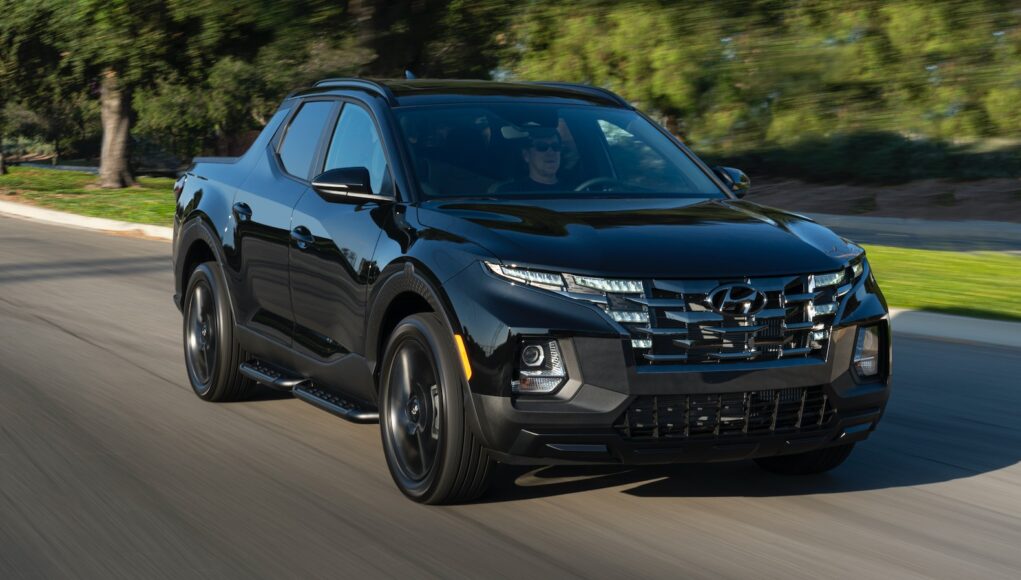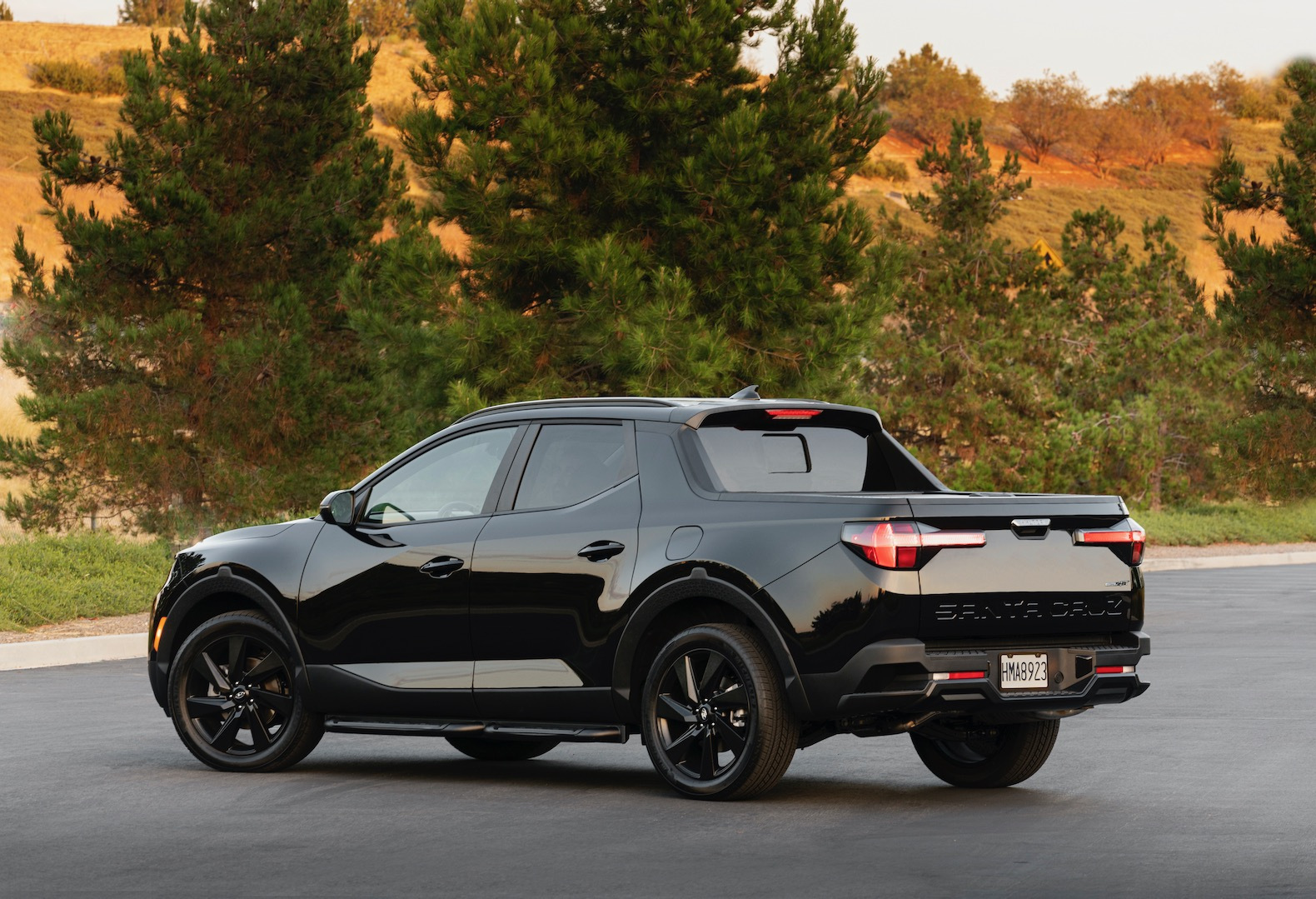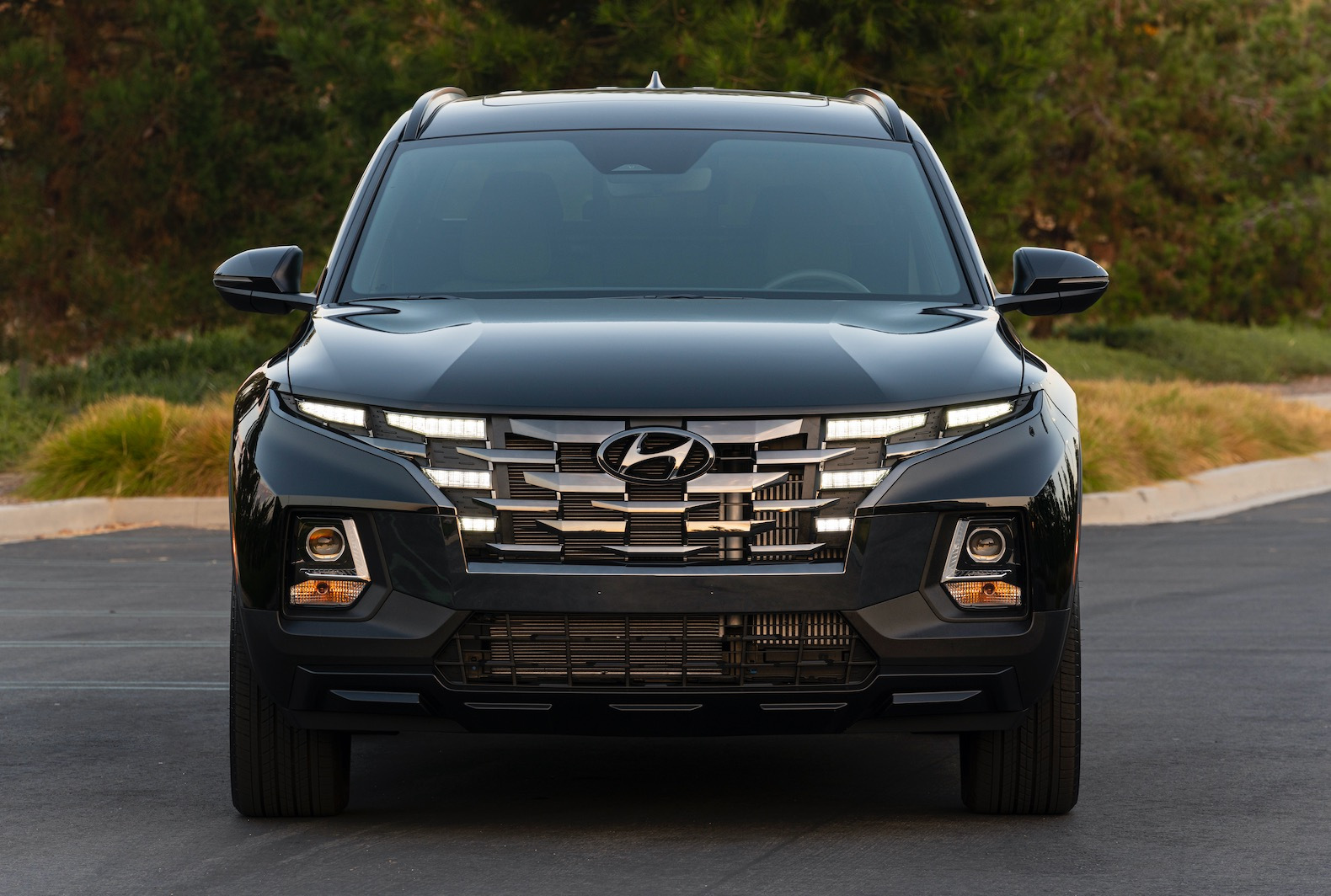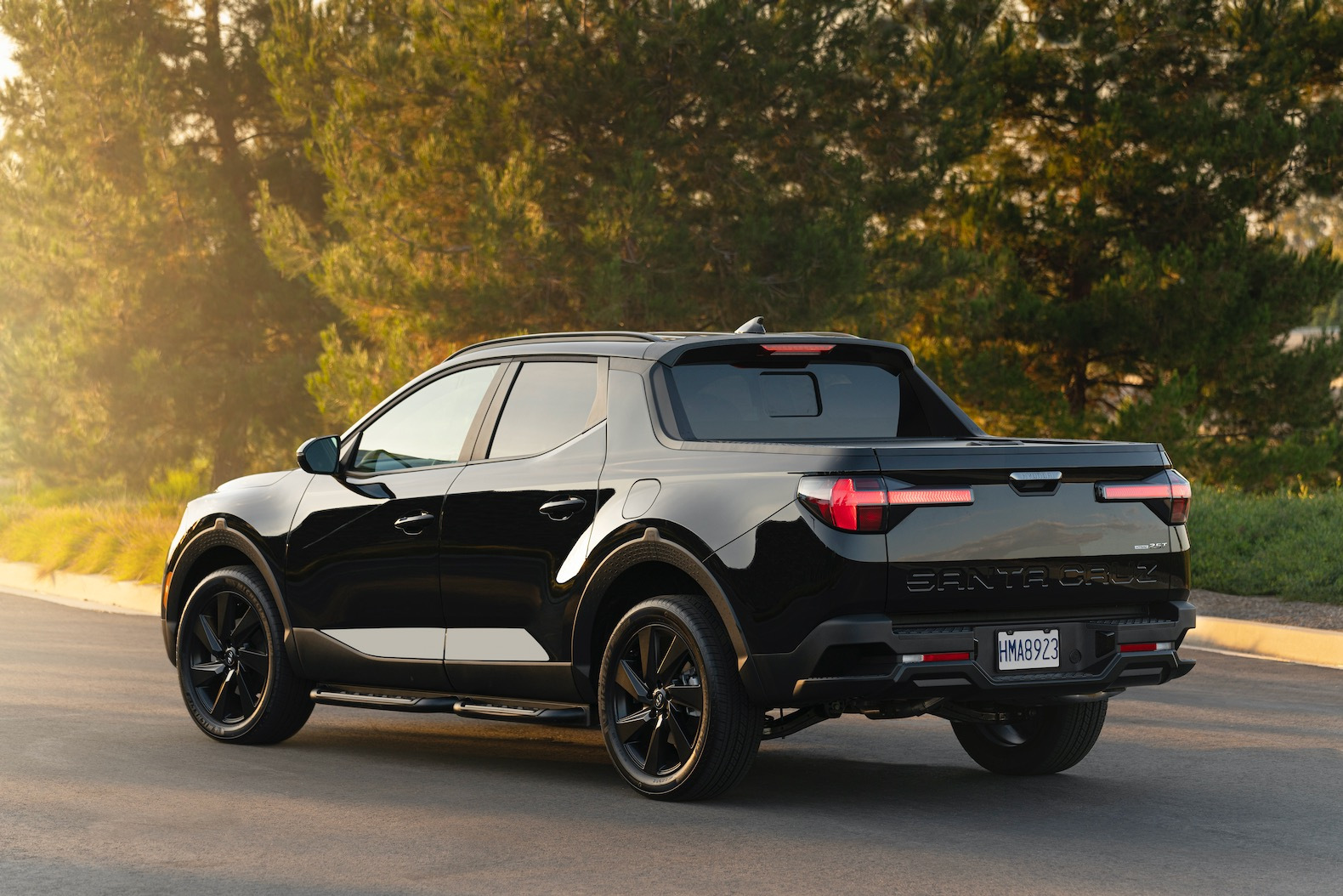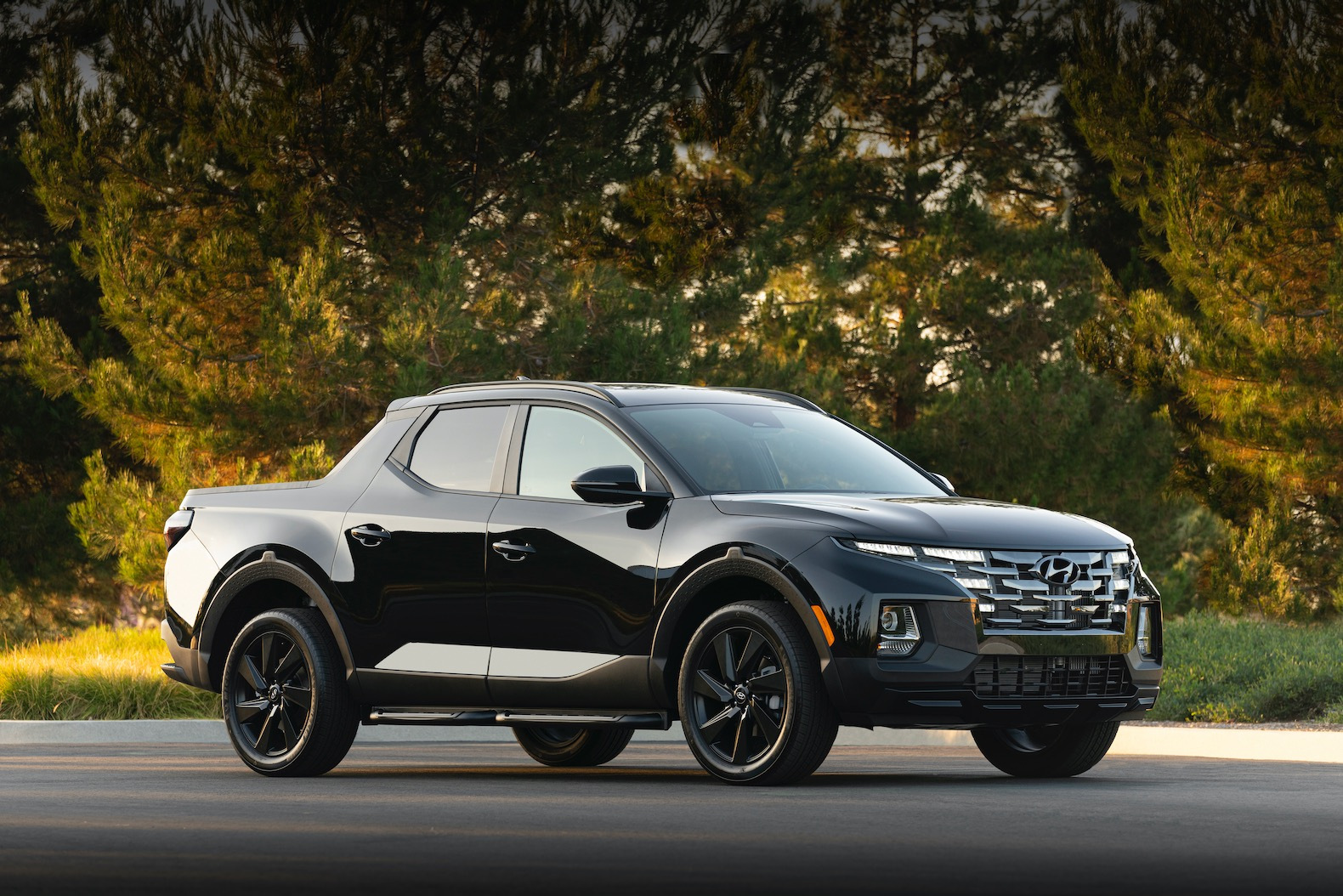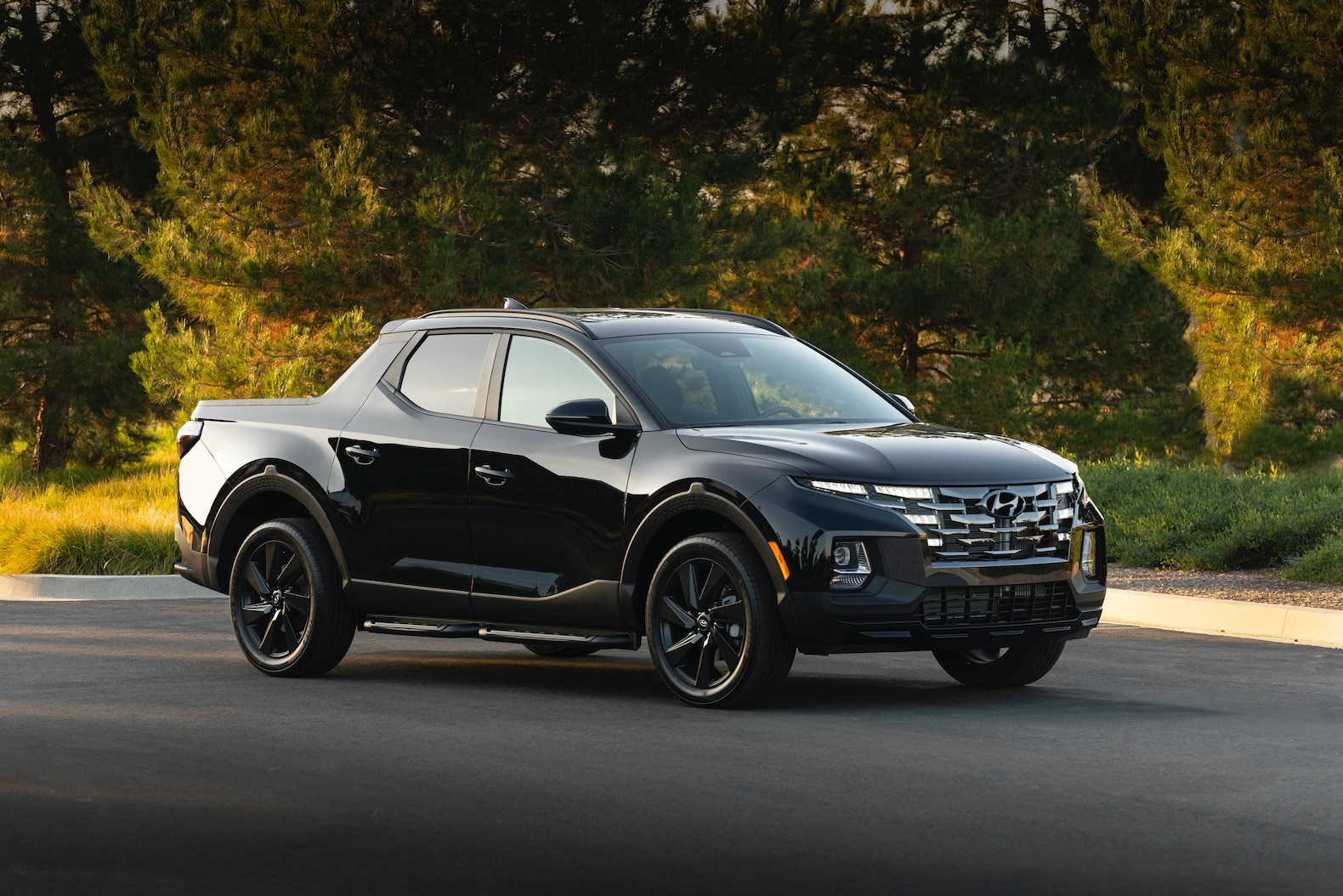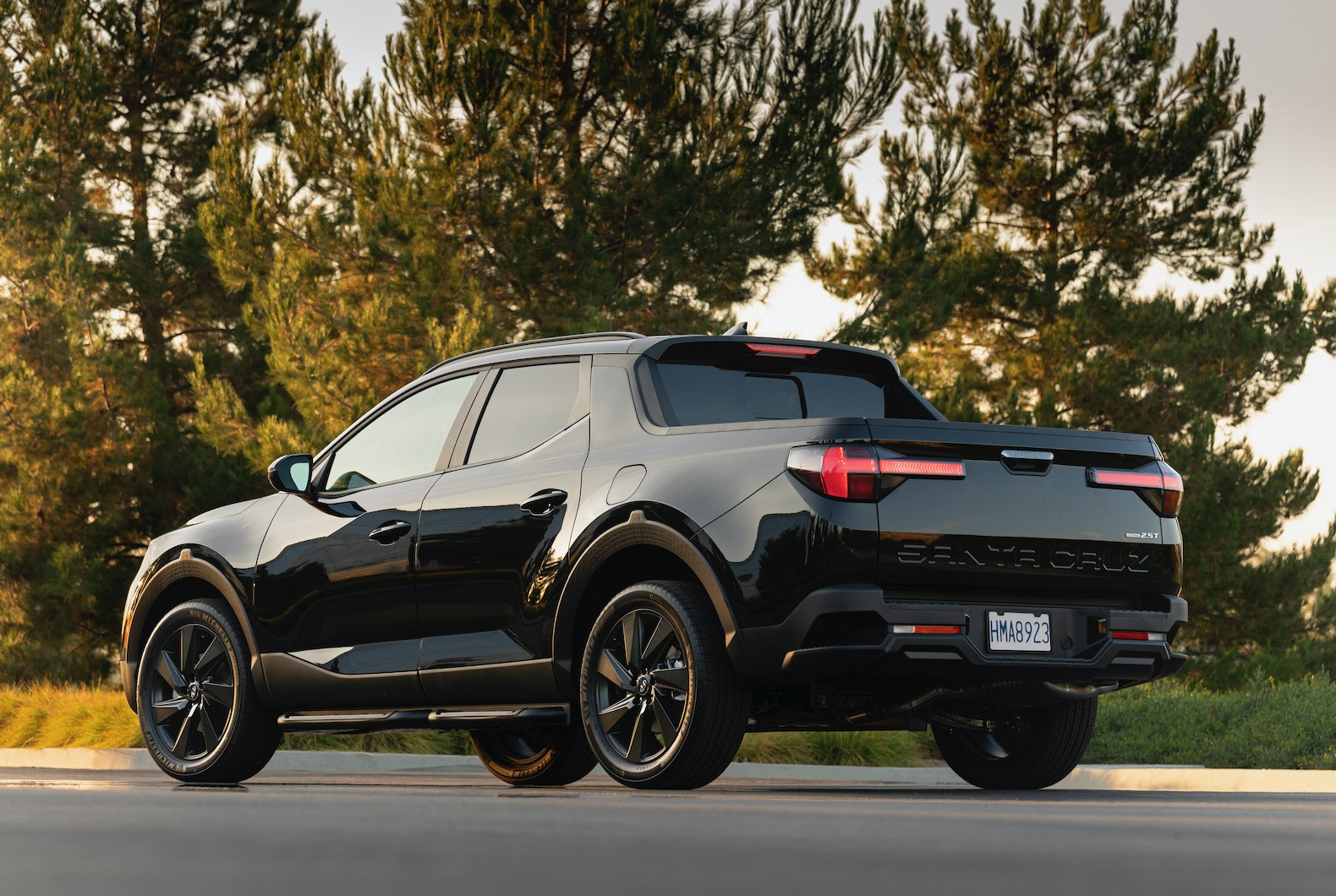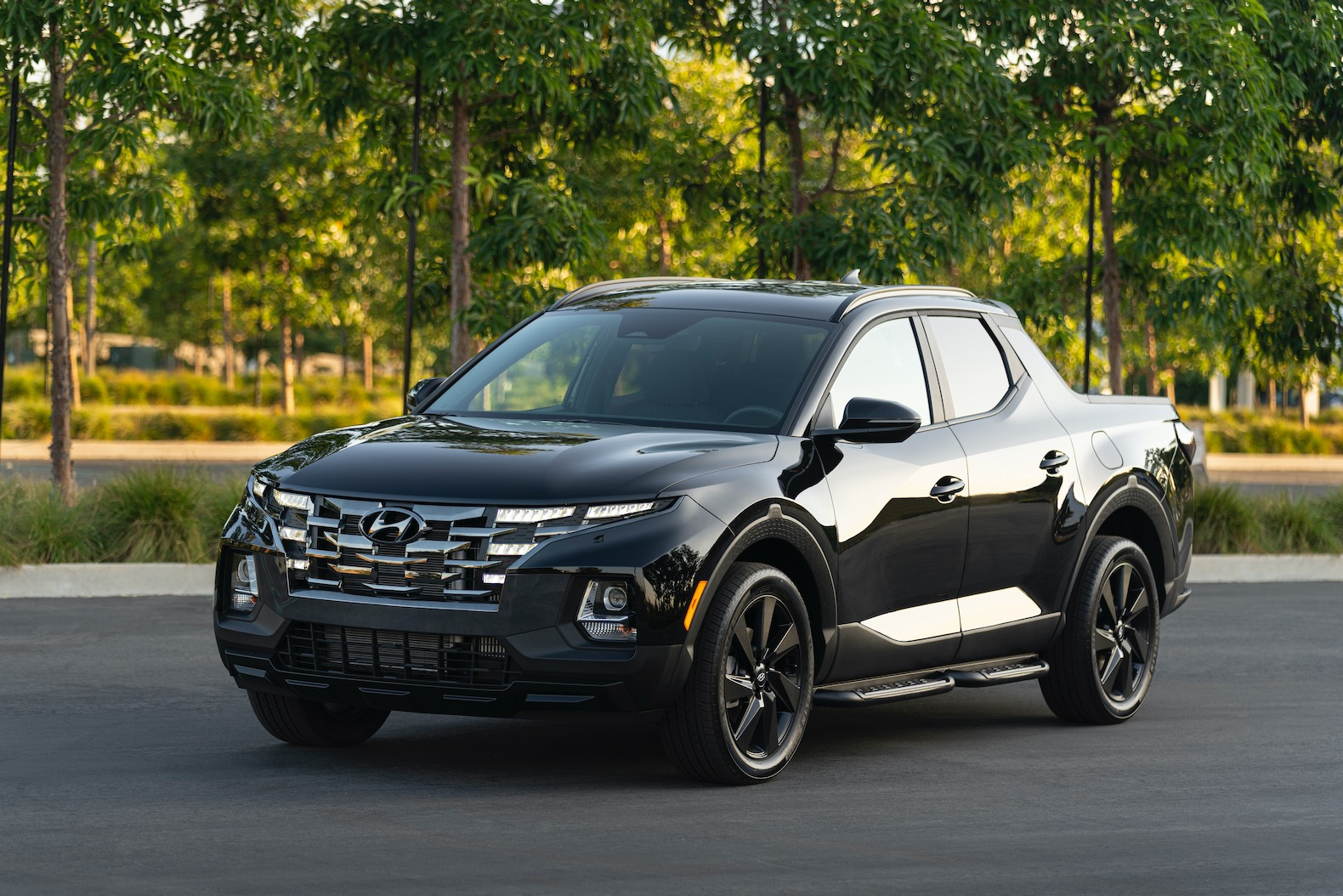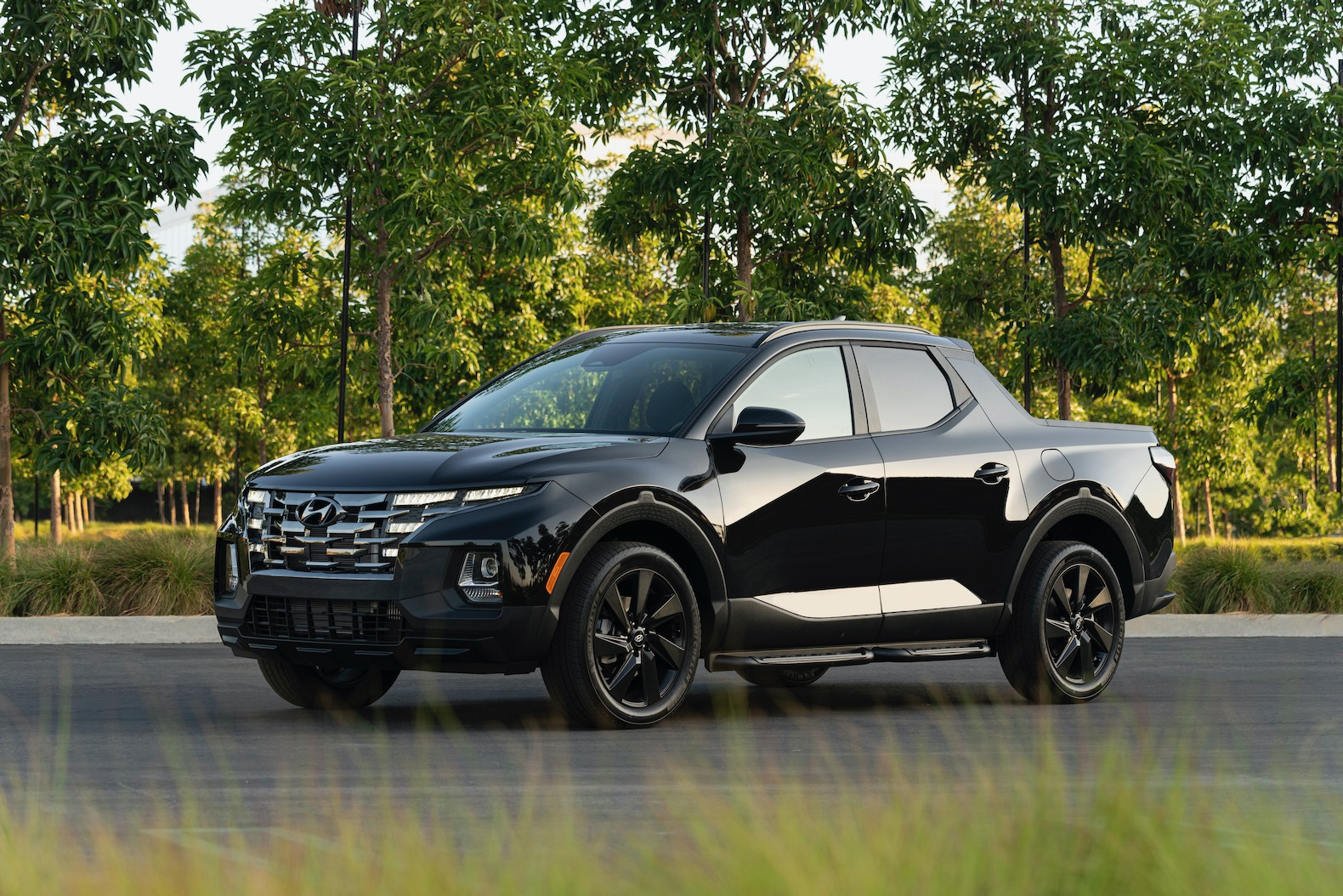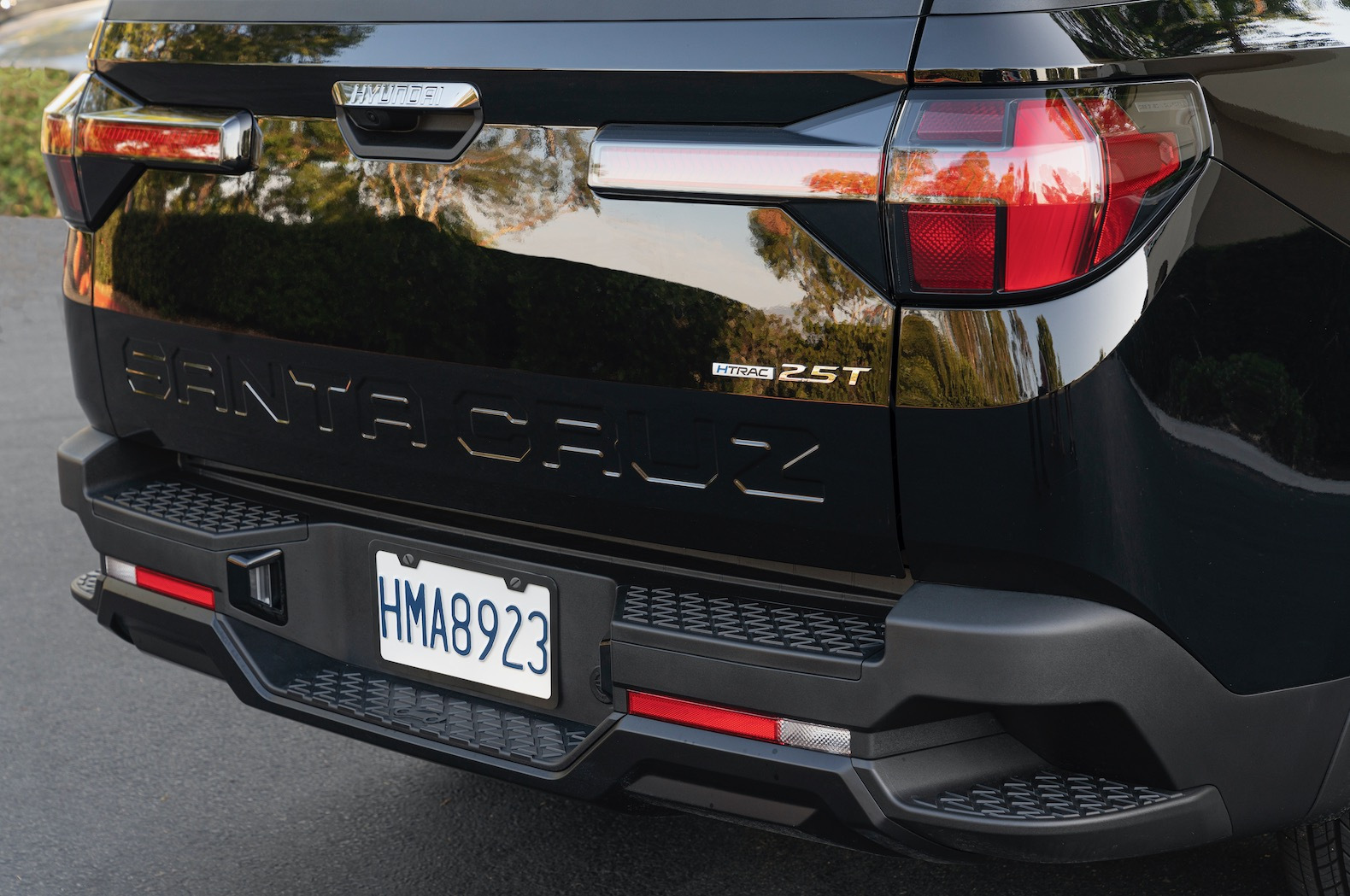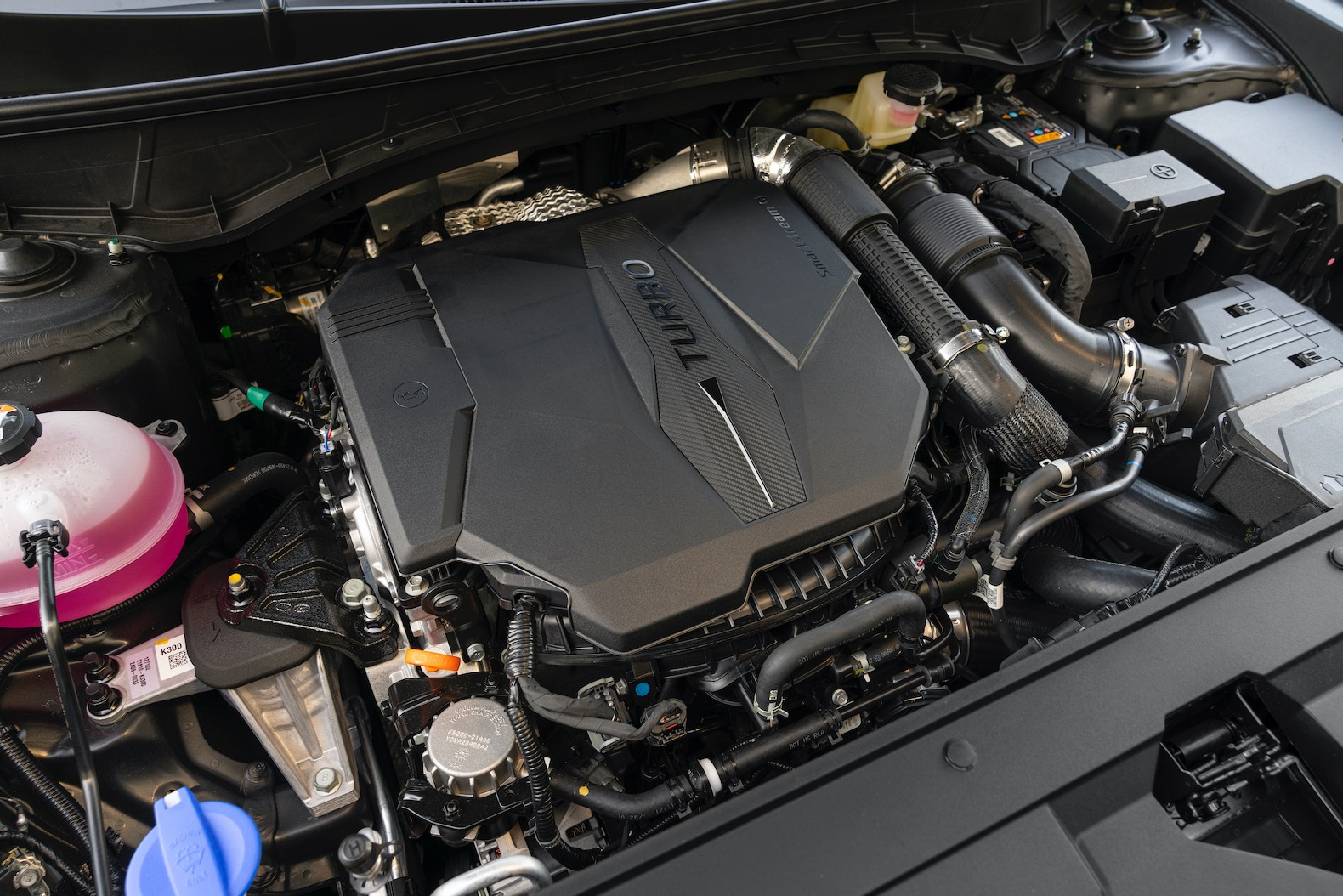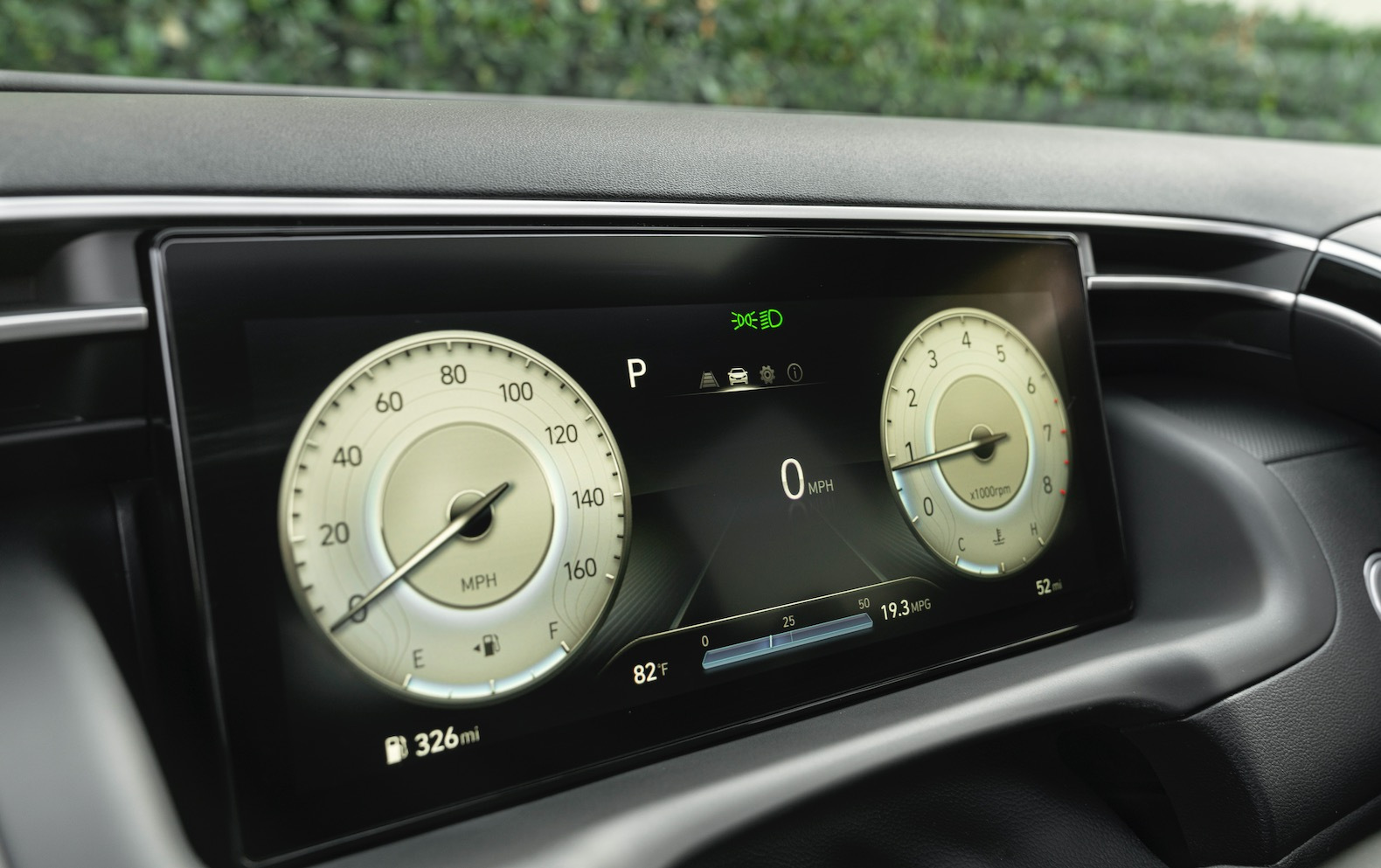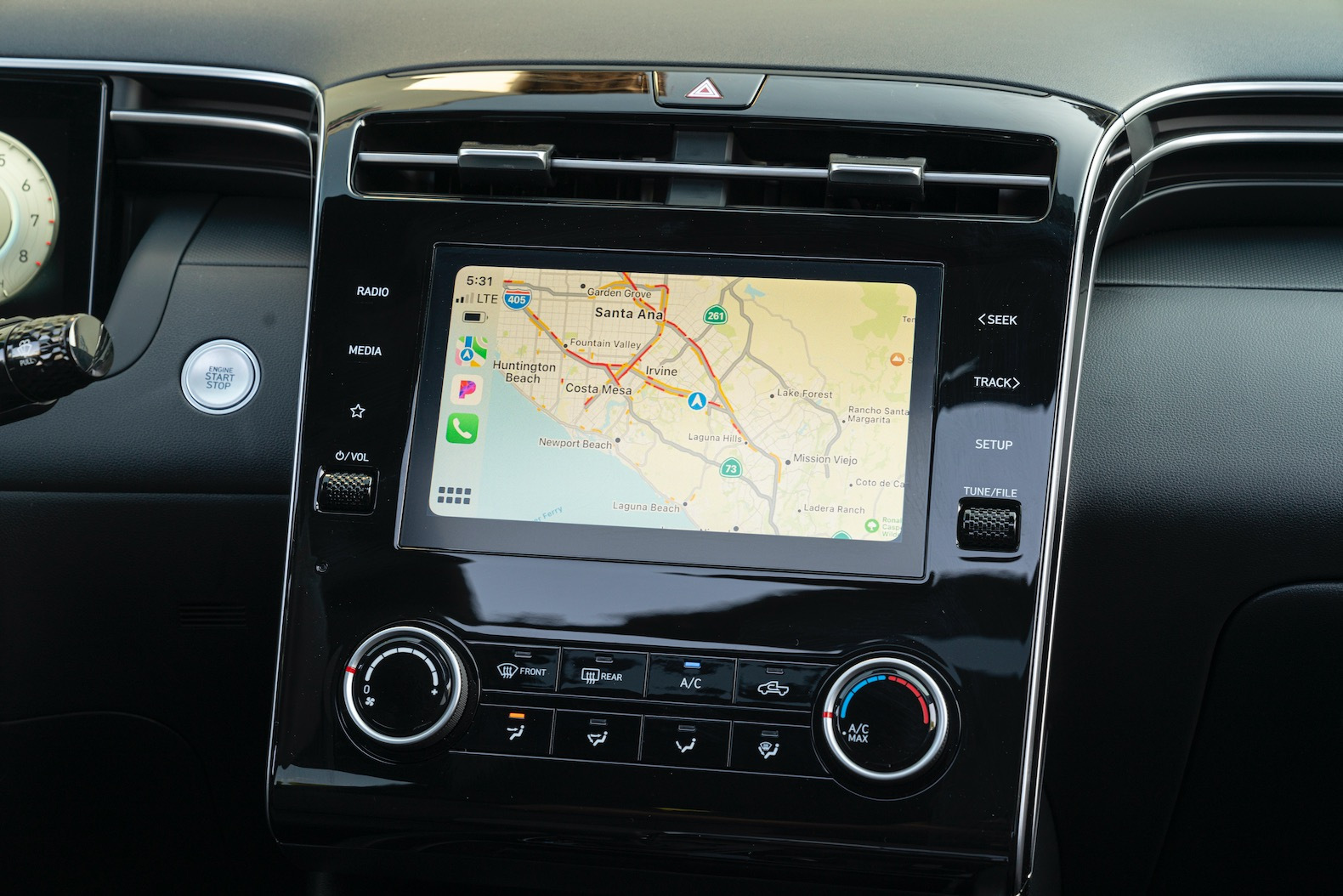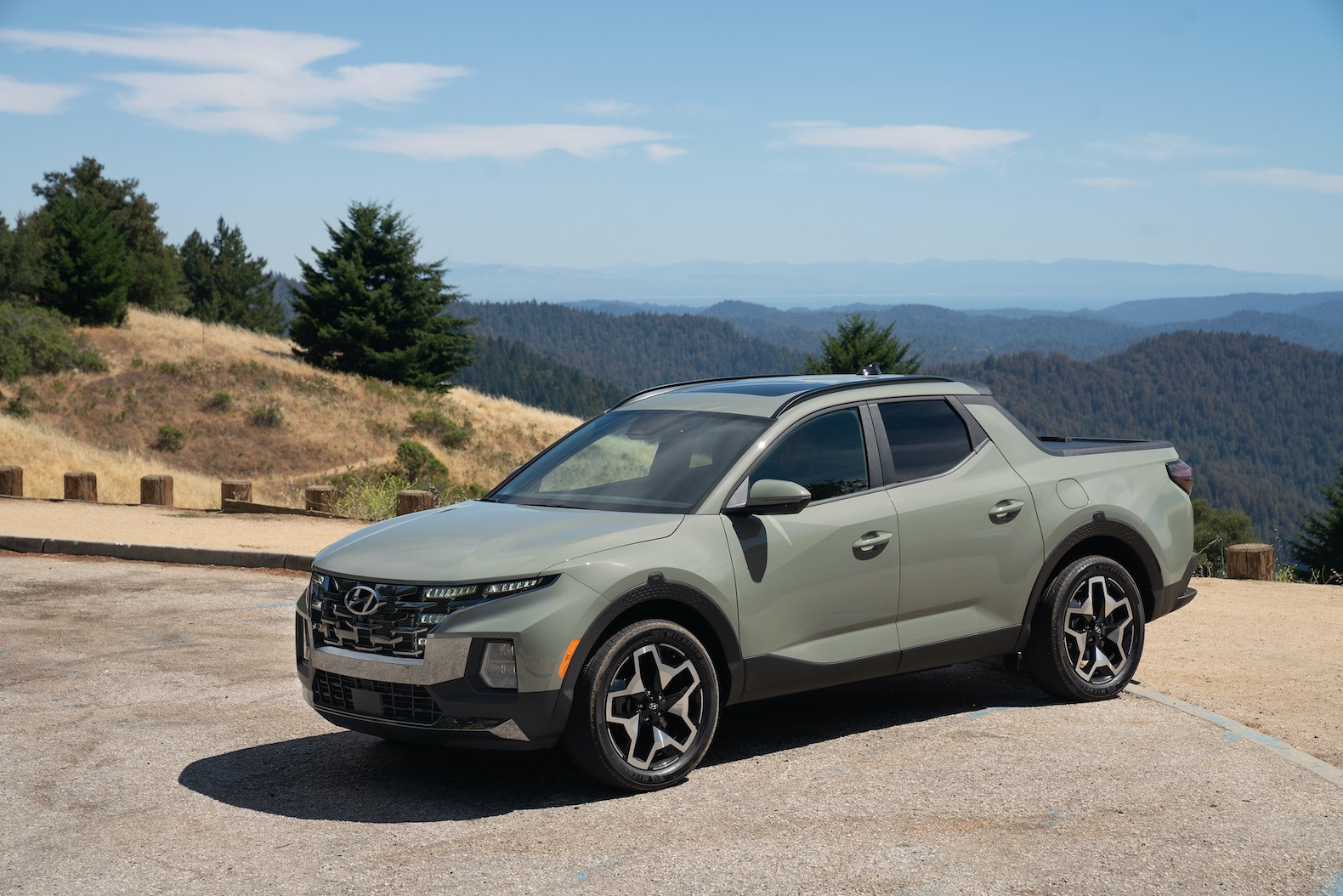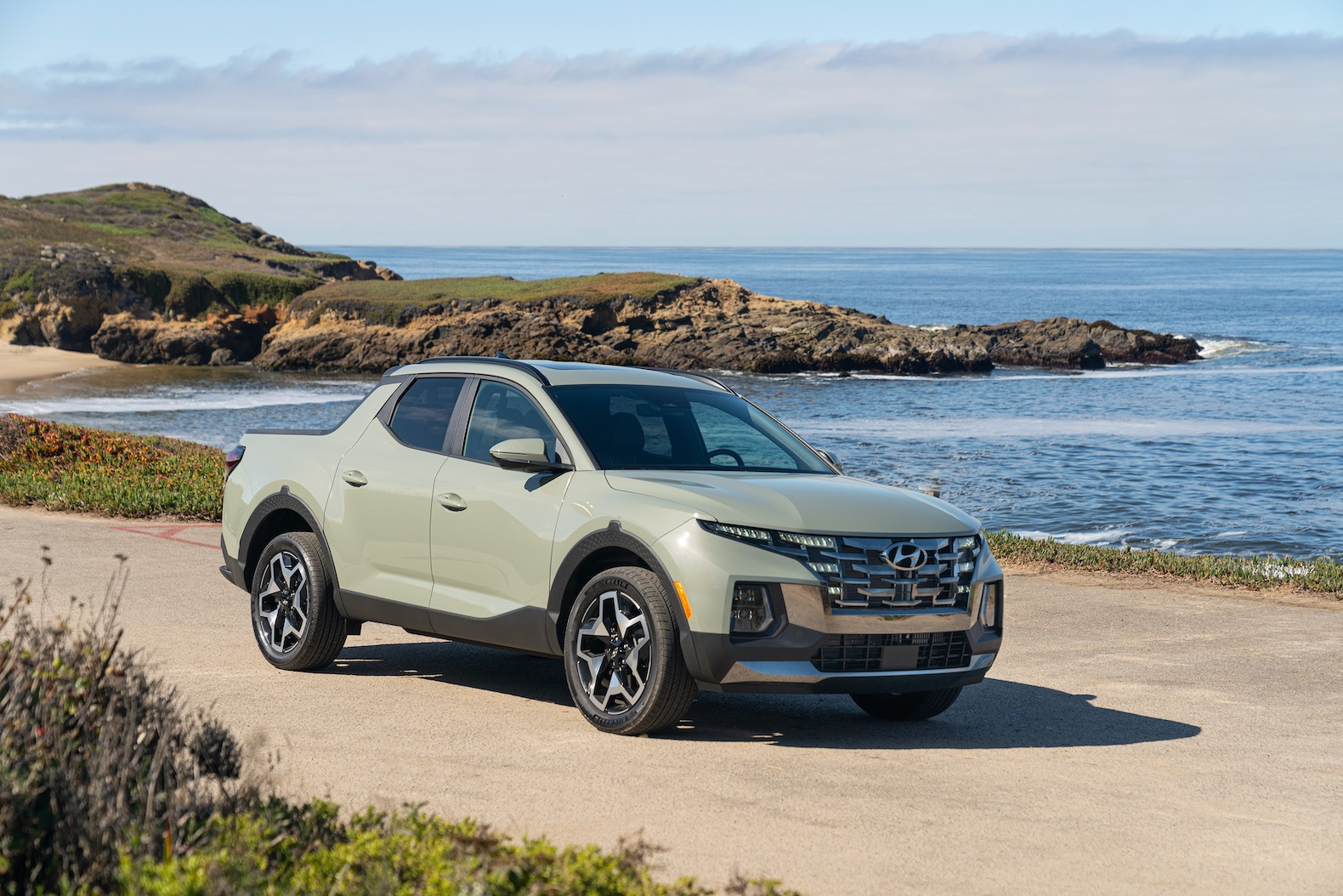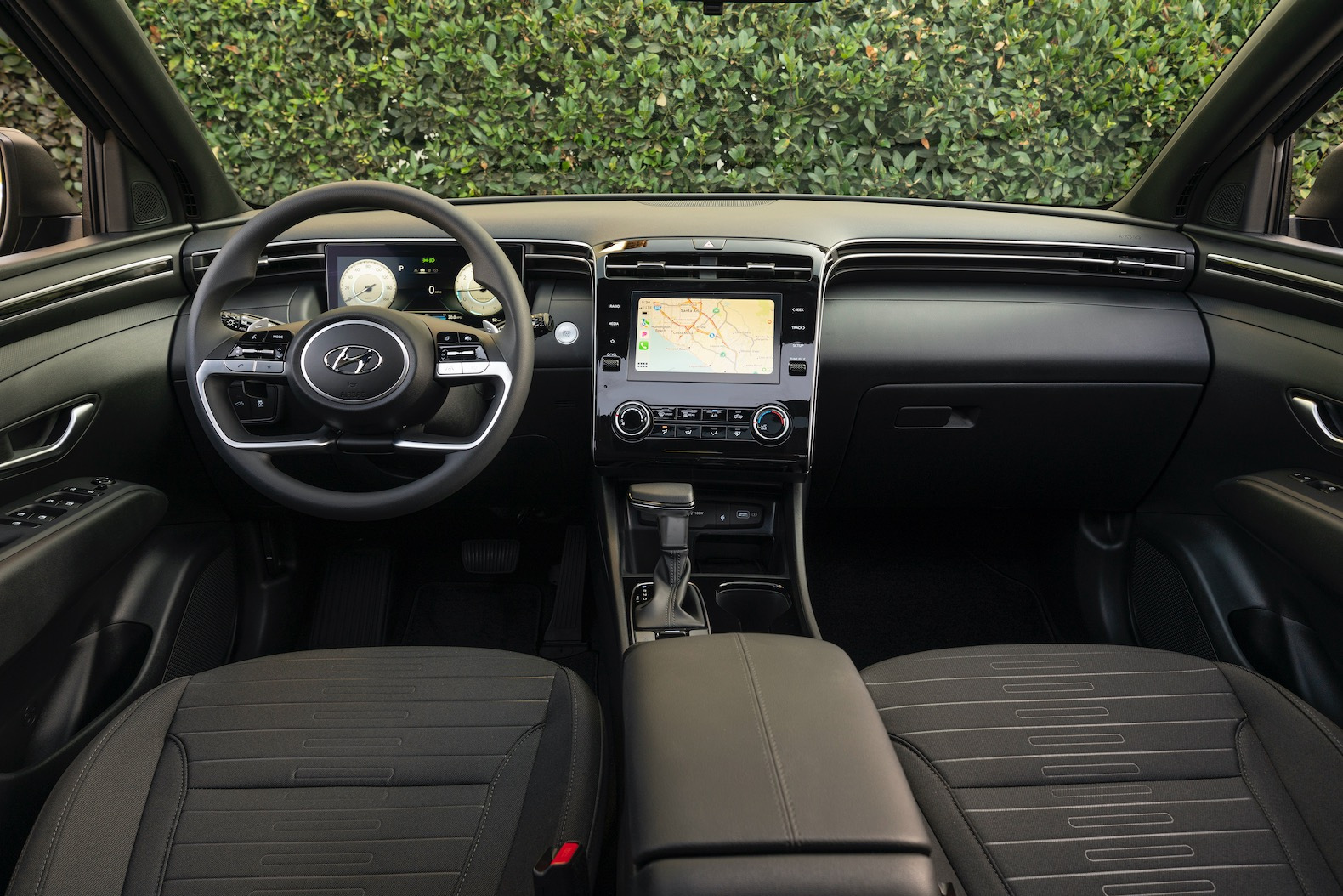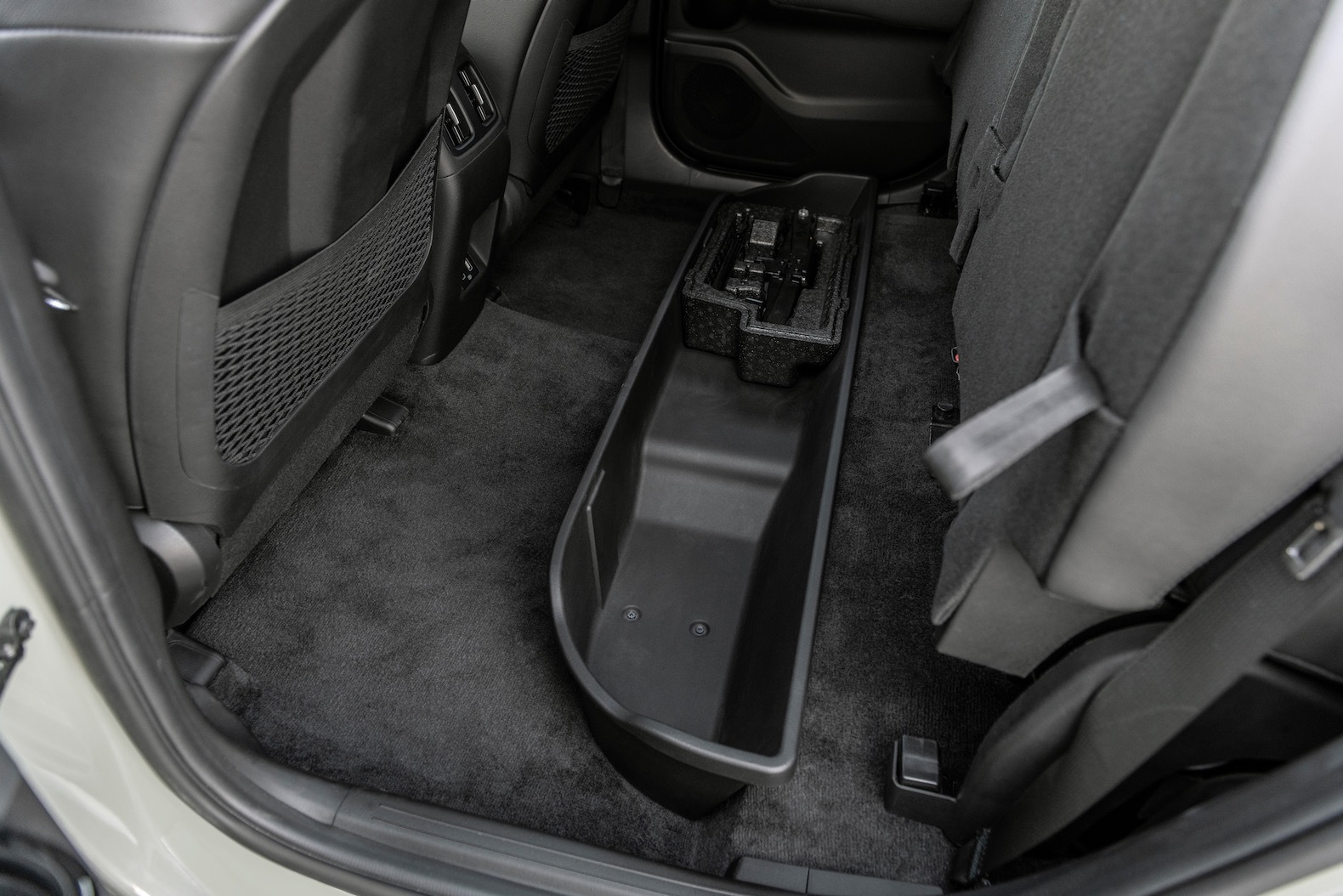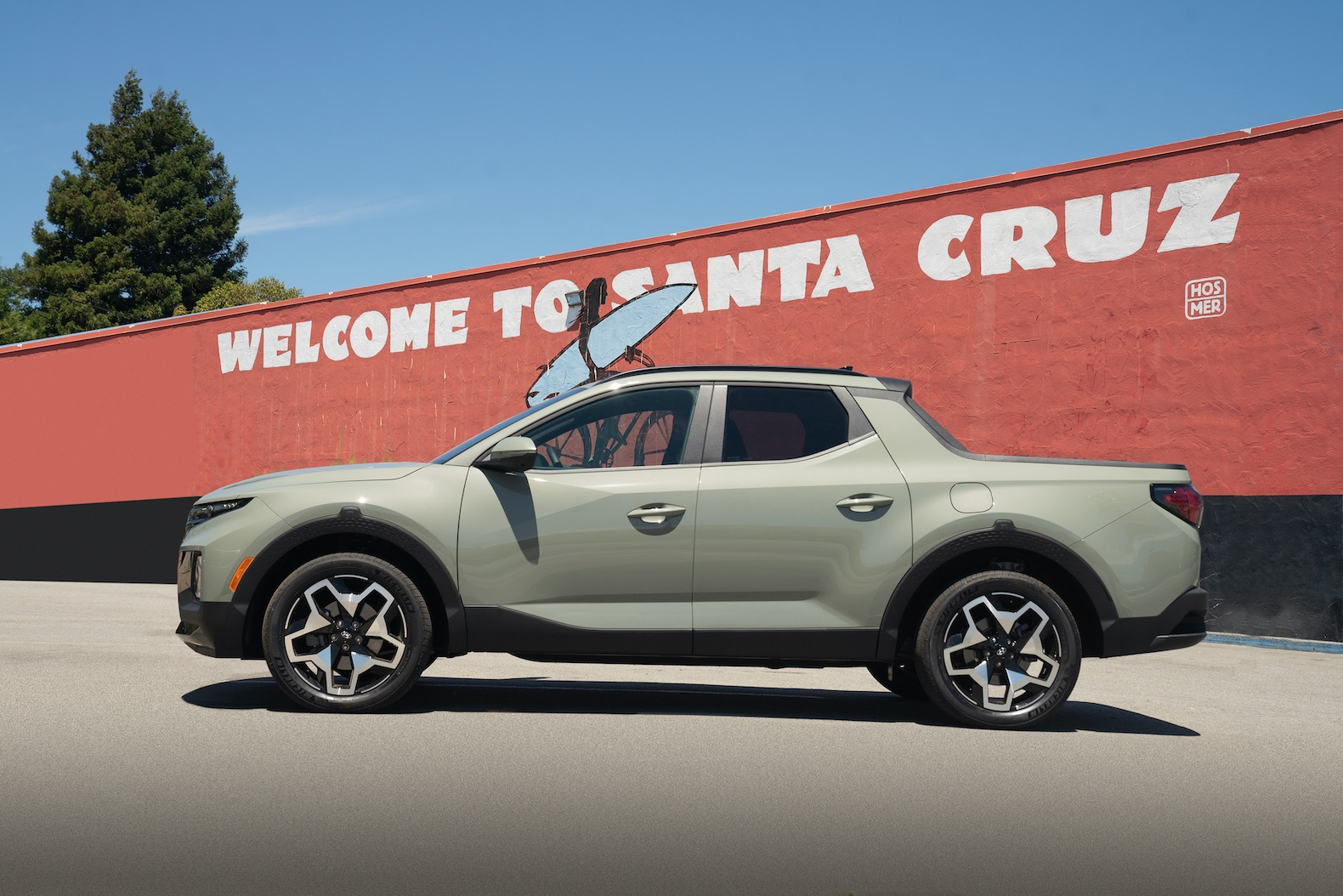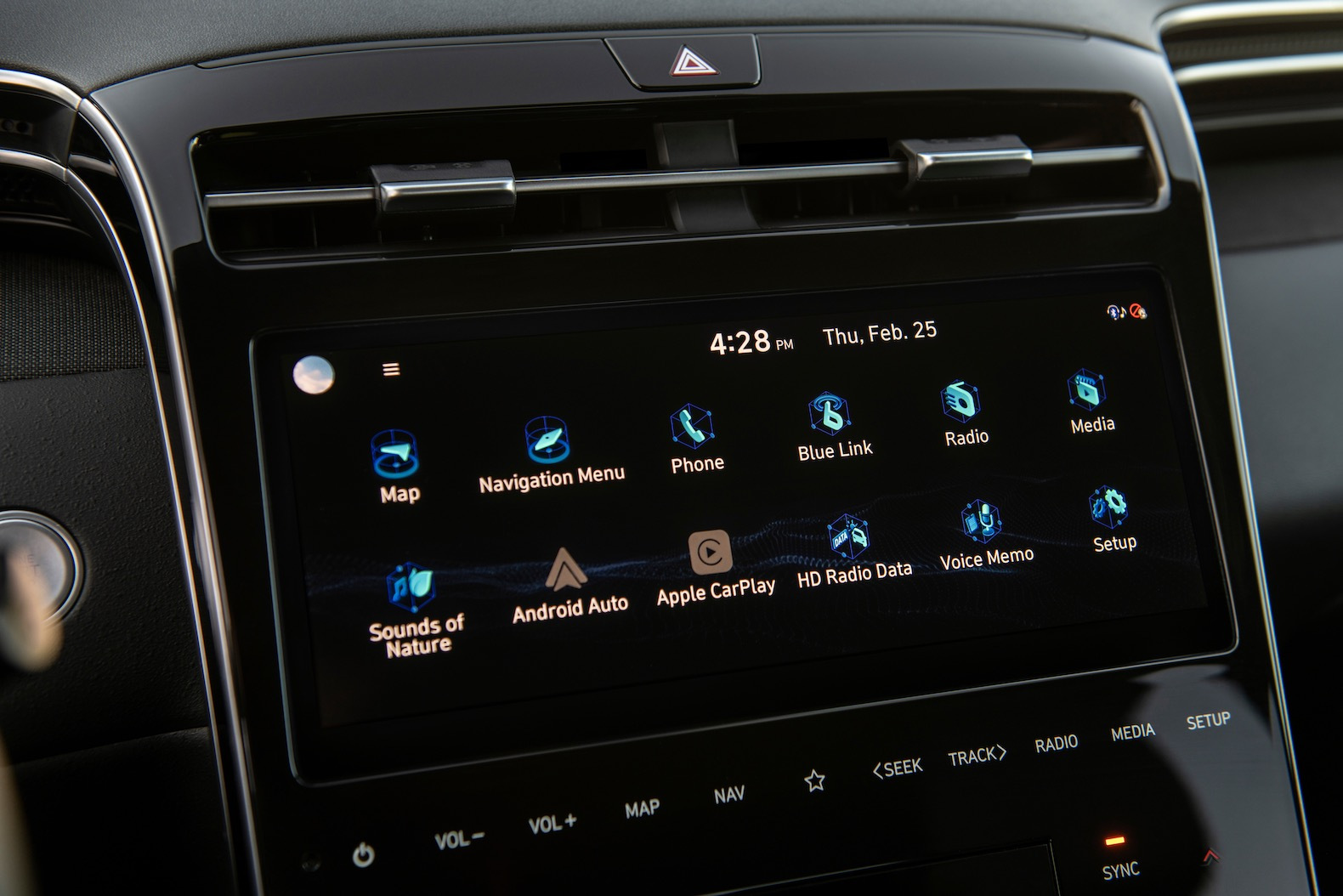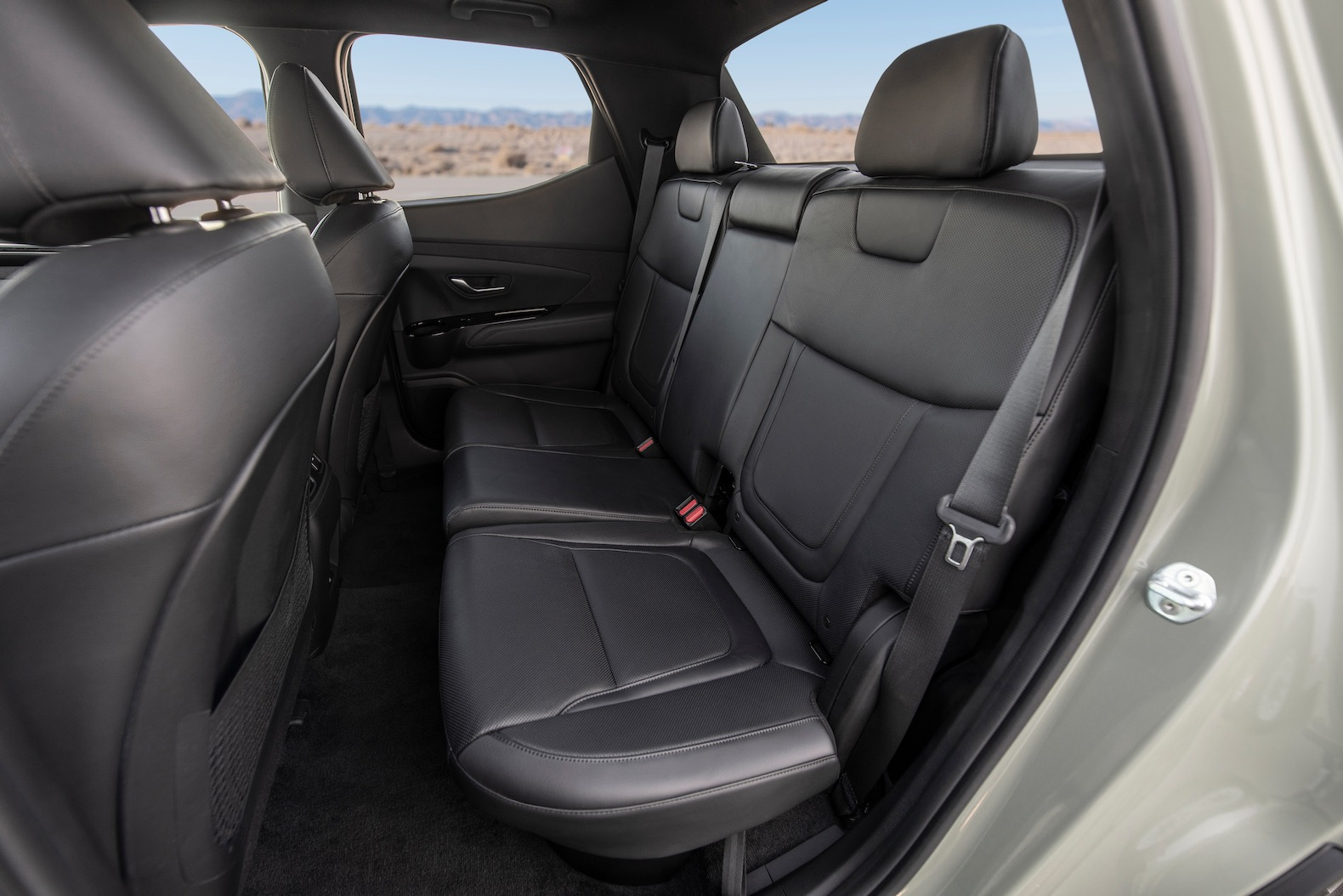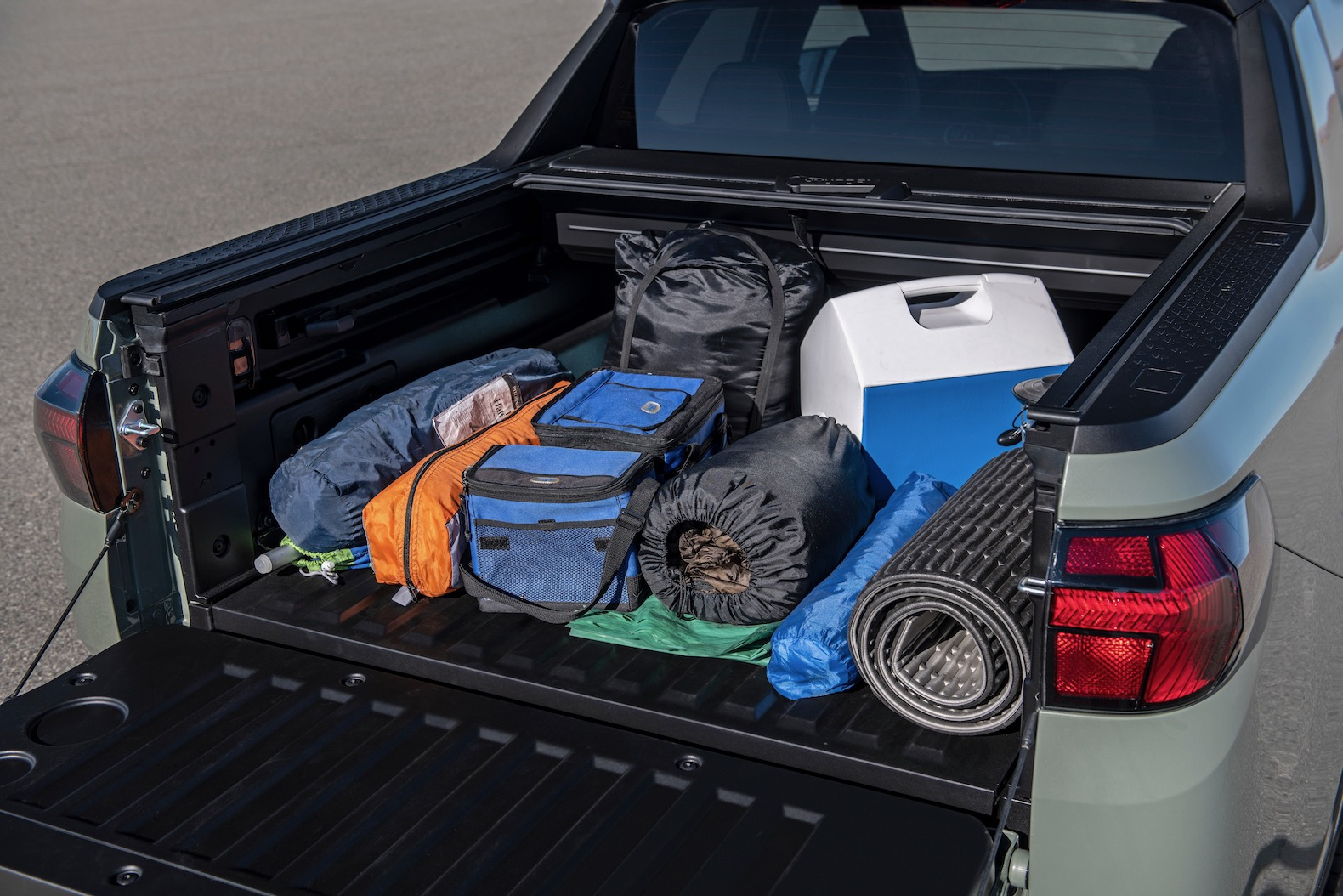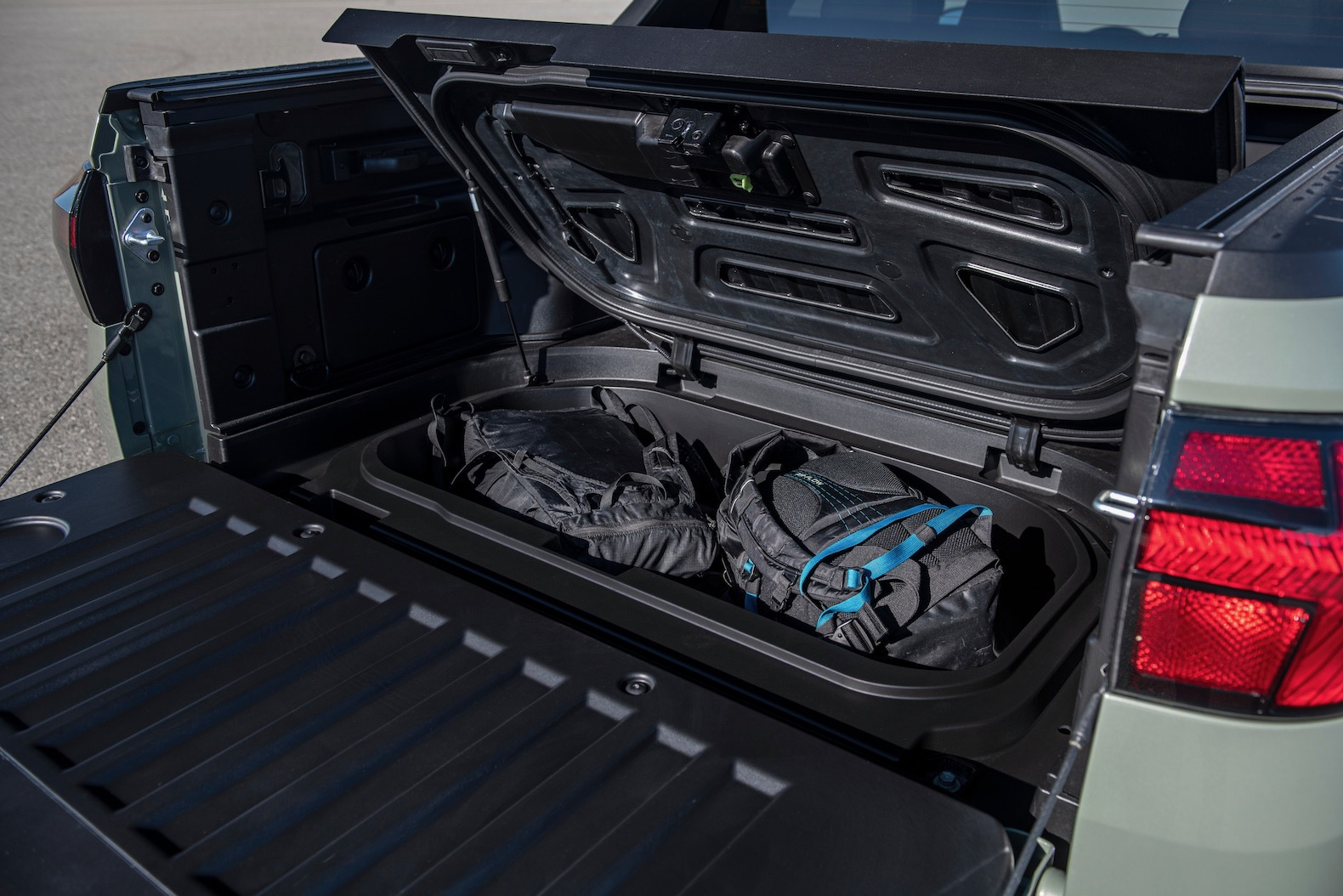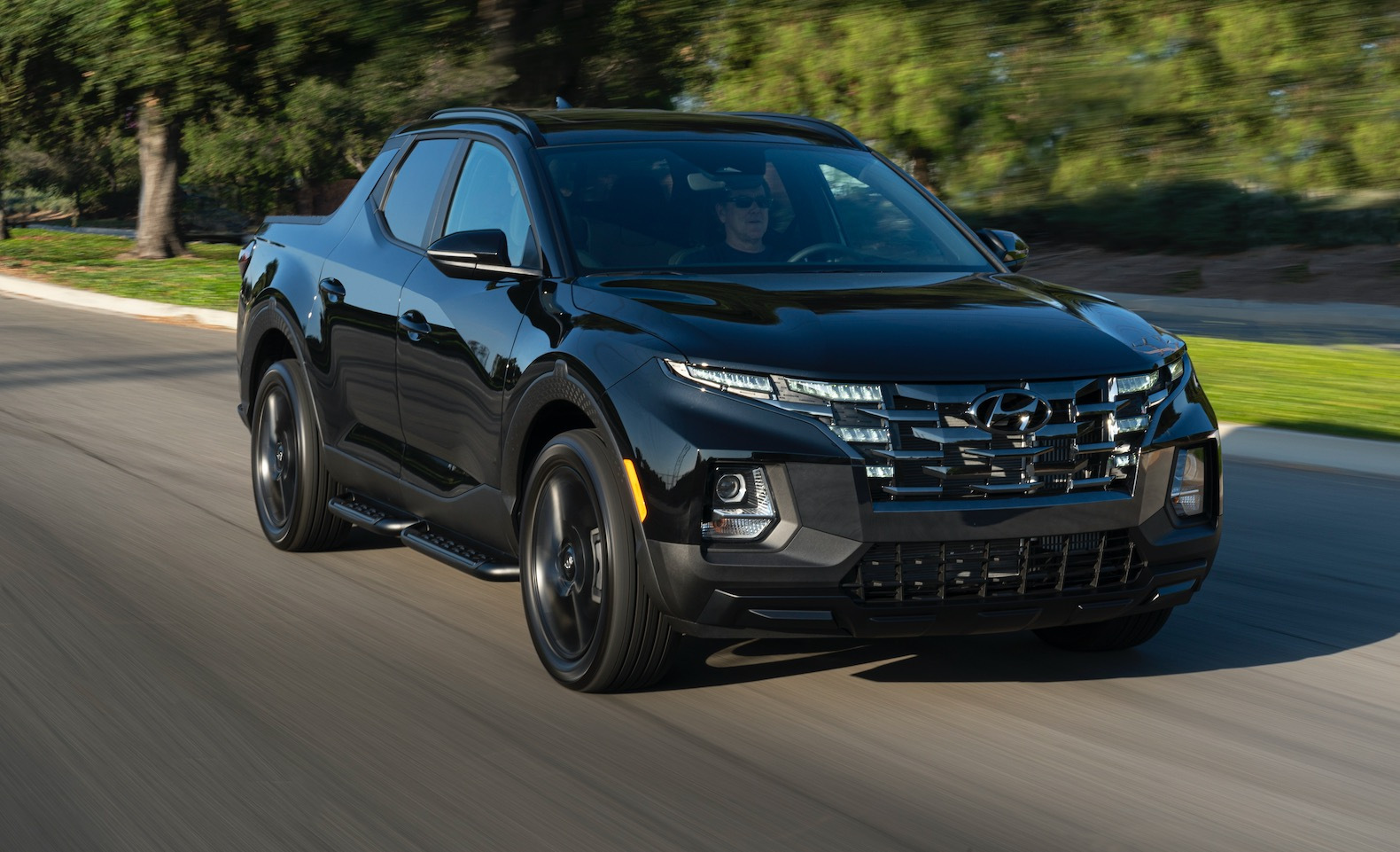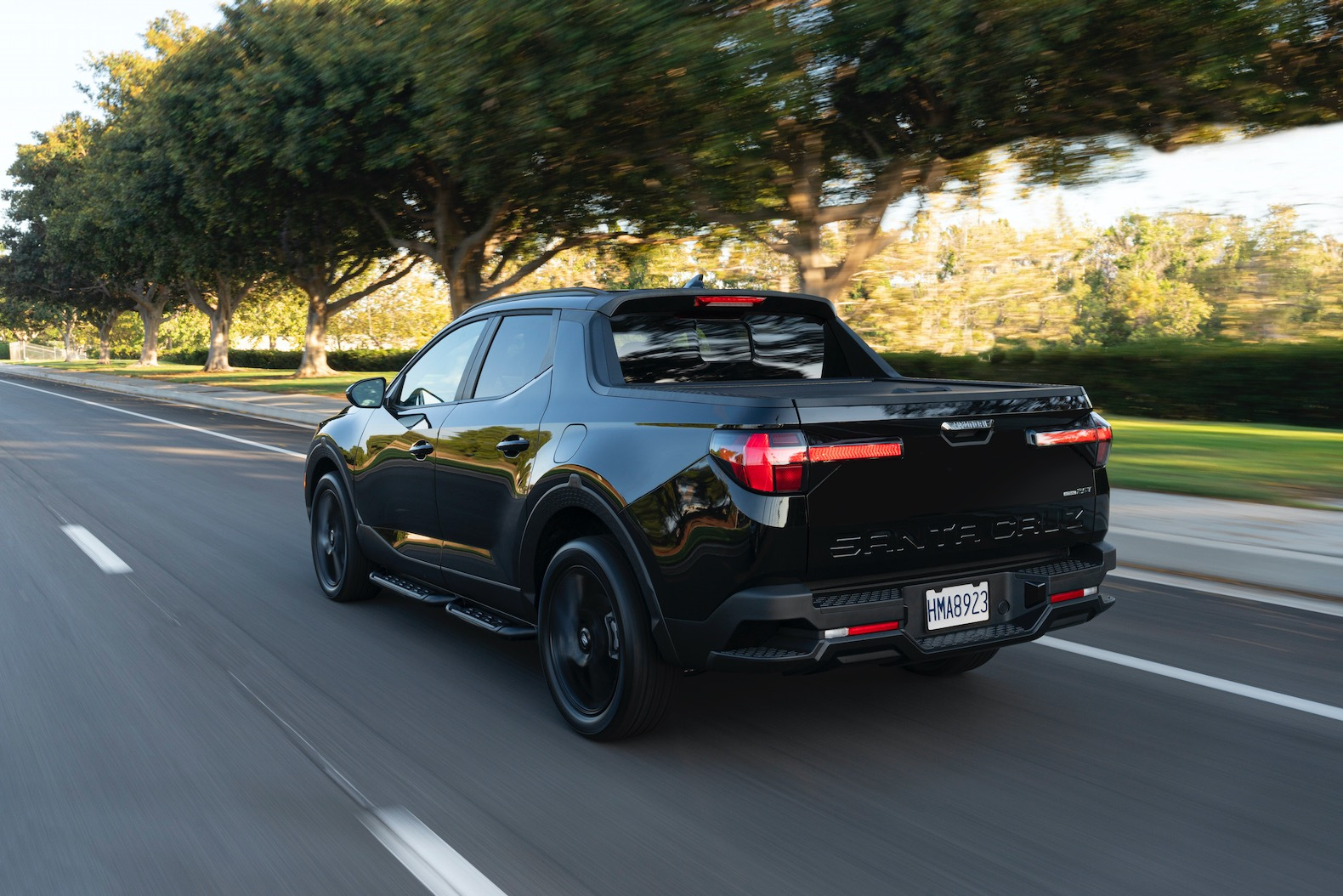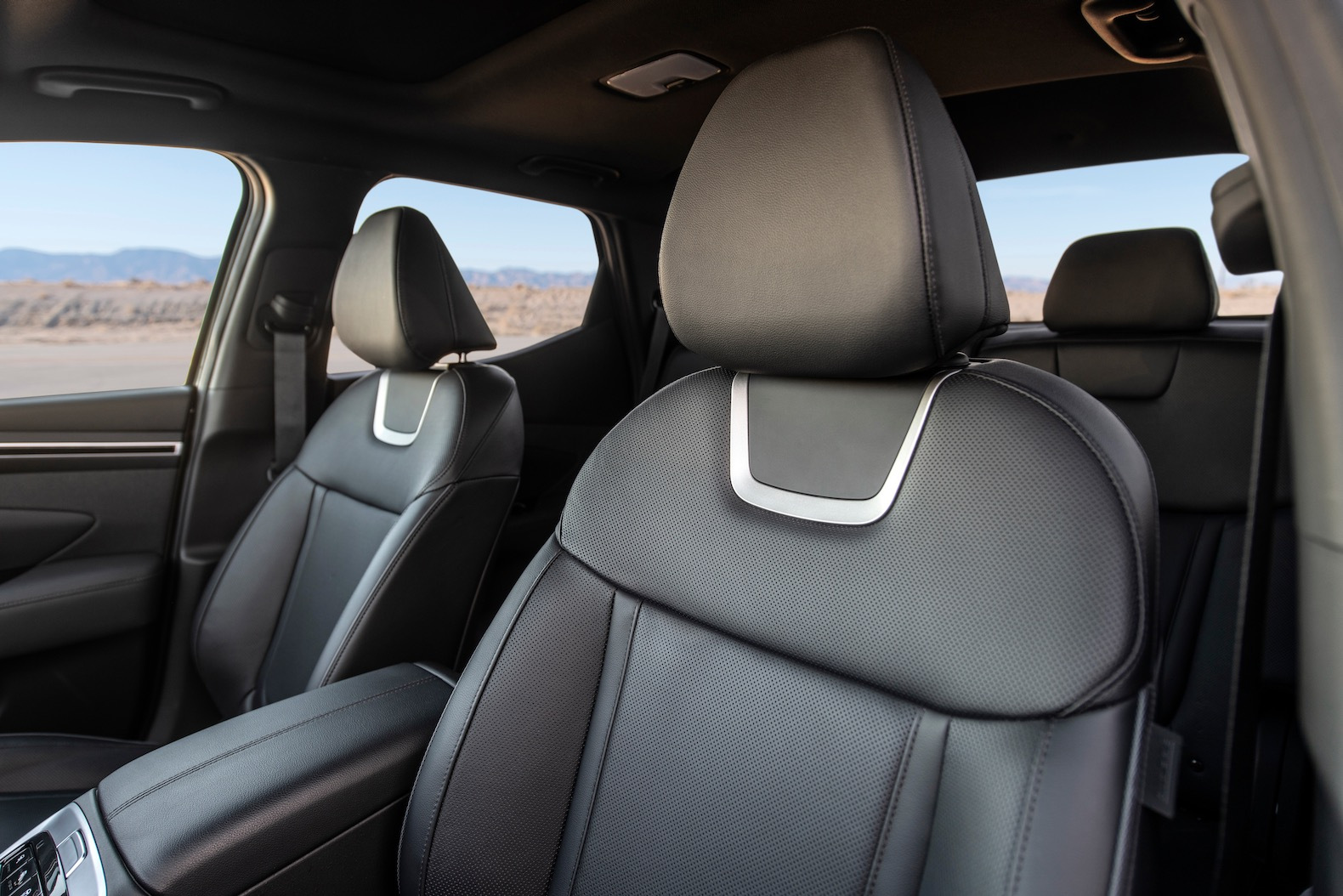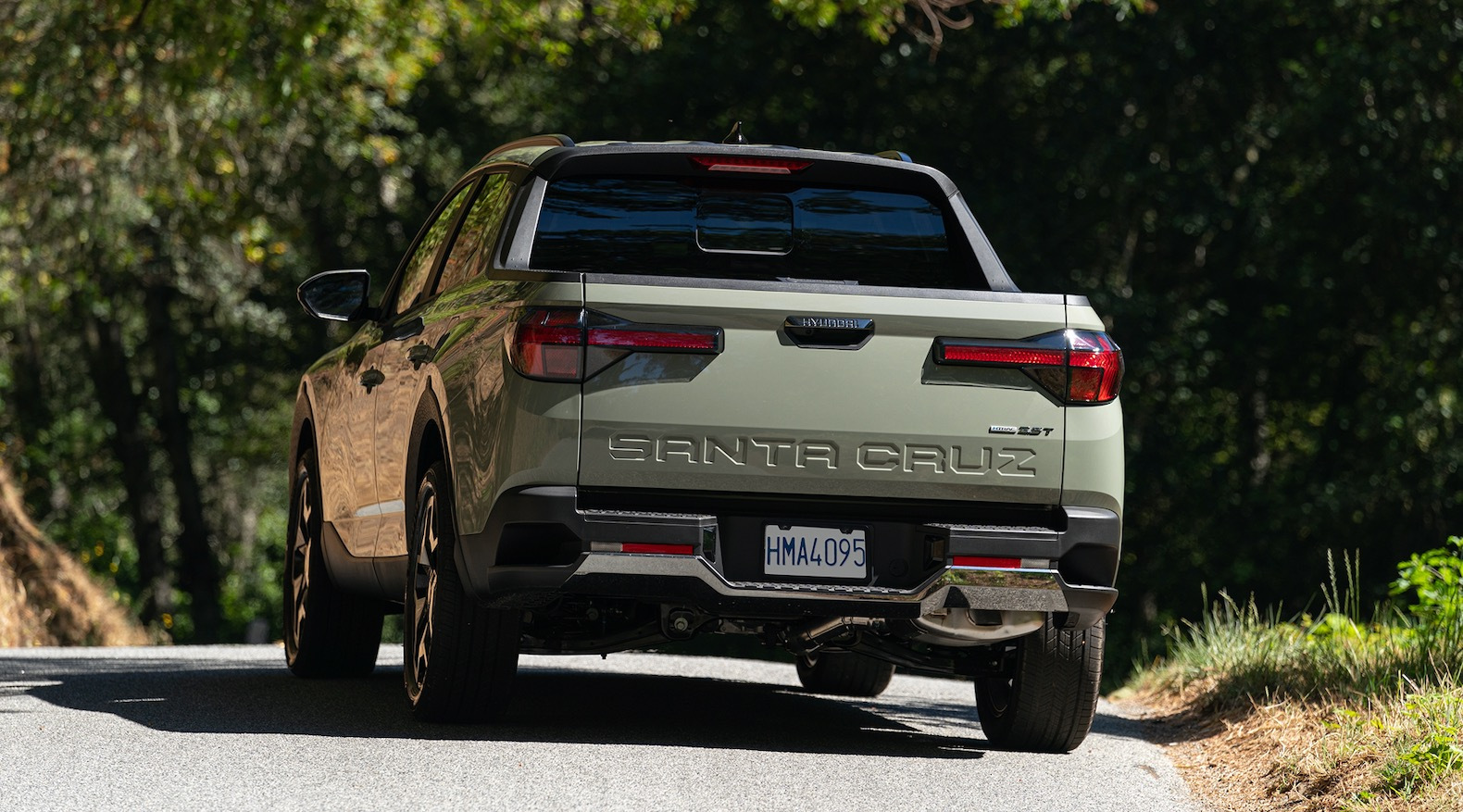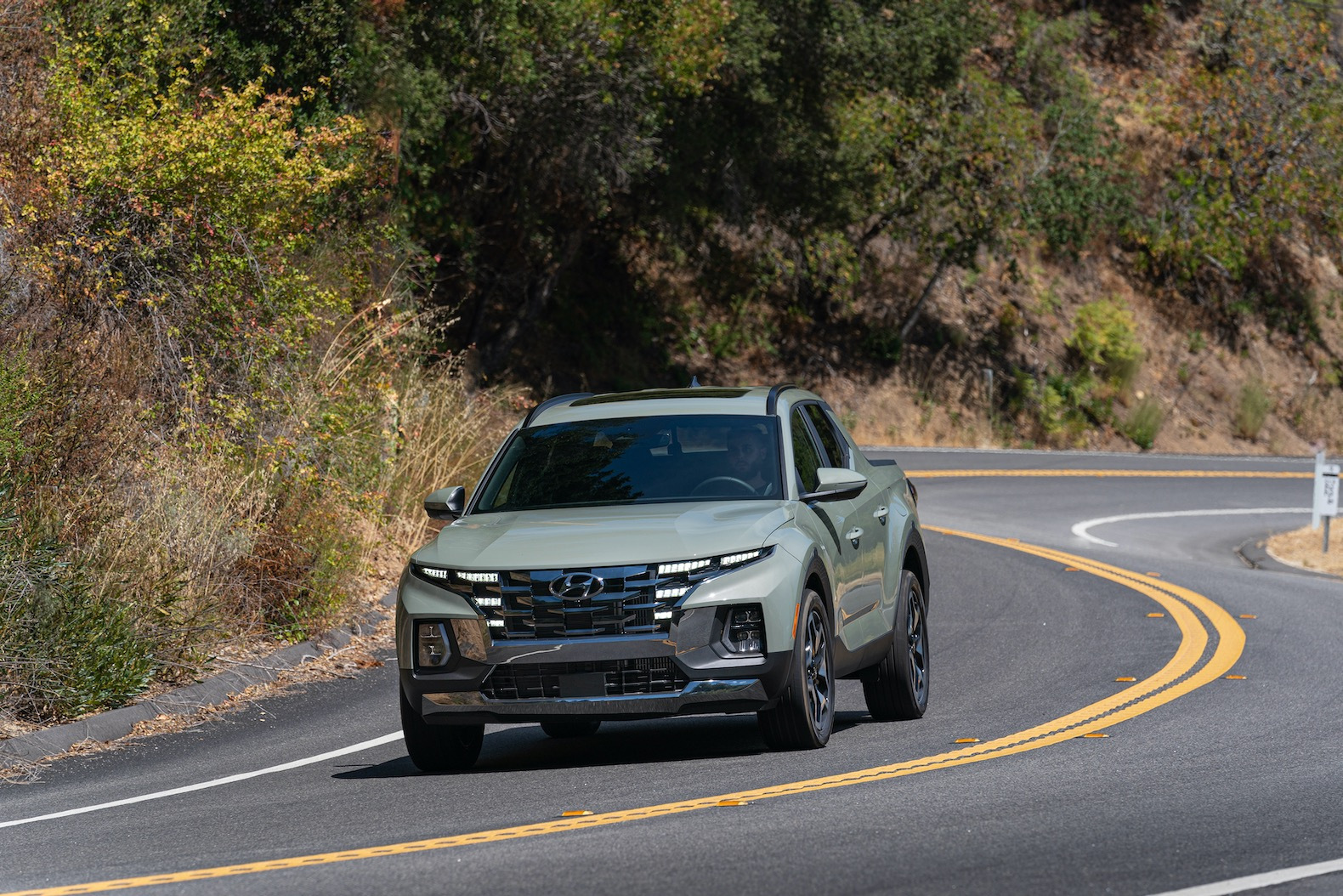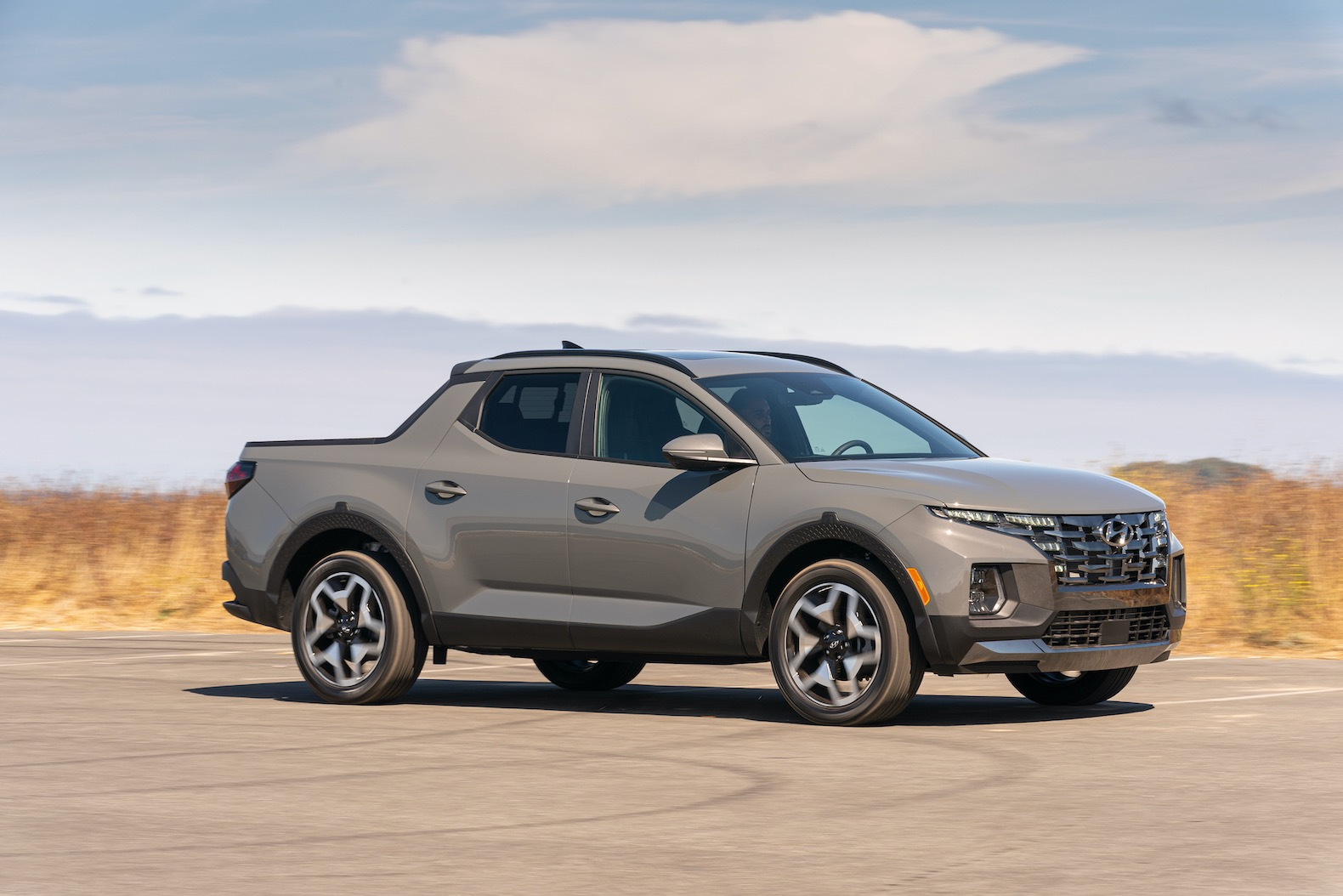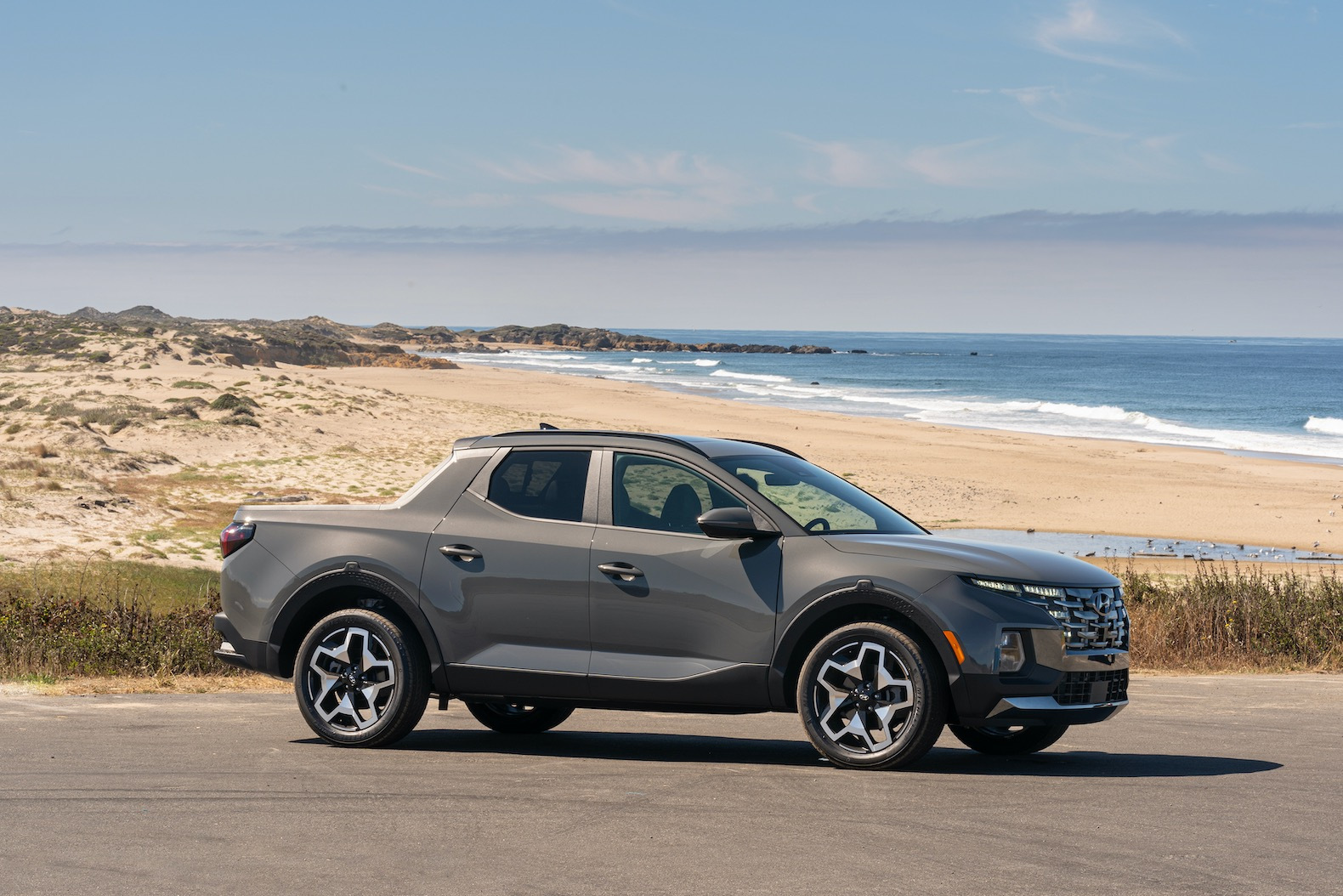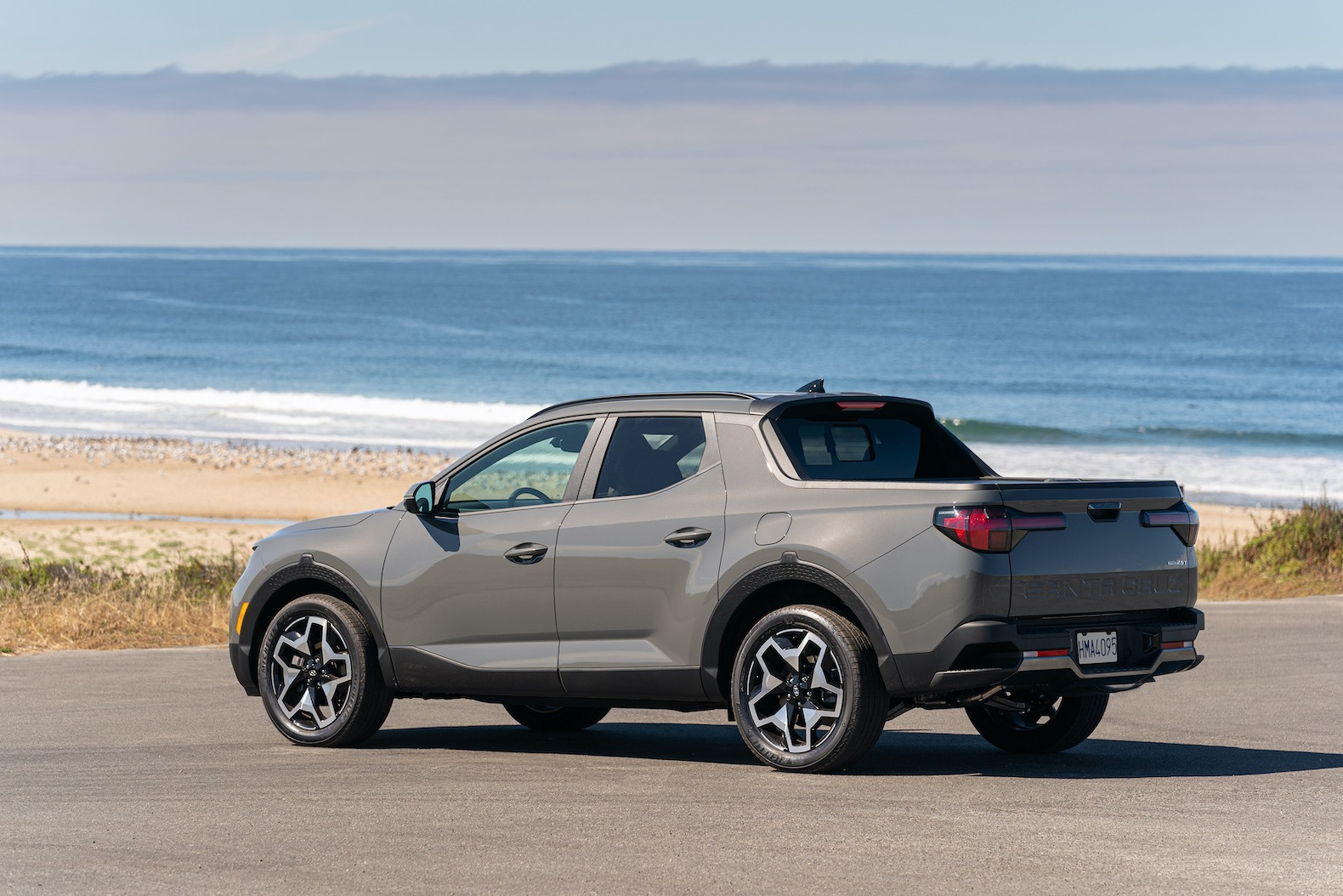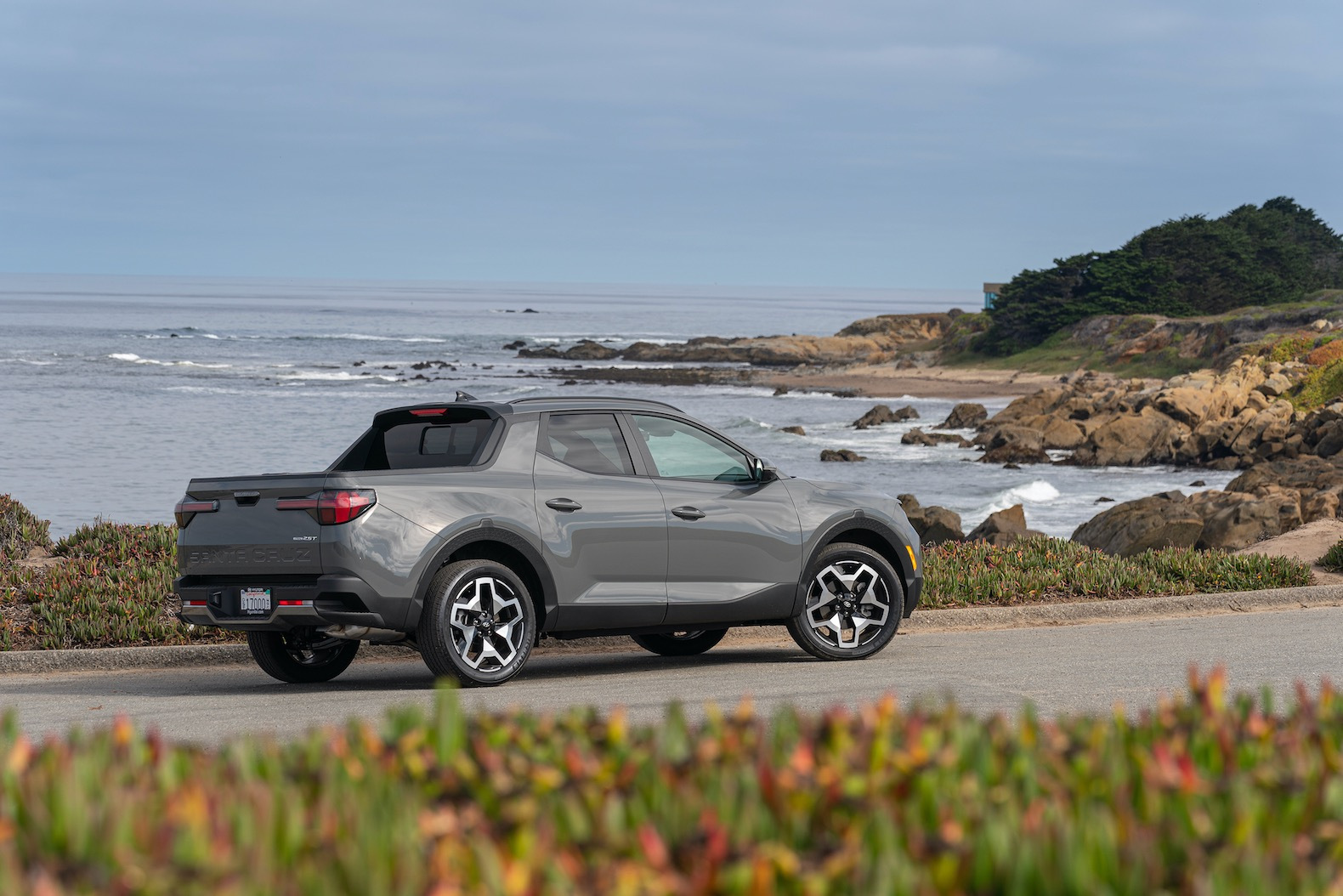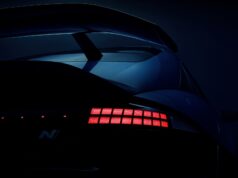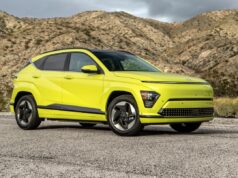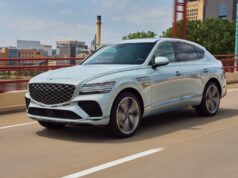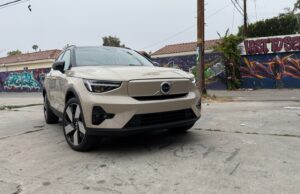Over the past few years trucks have continued to grow in size, with automakers completely abandoning their smaller offerings from the 80s and 90s. Now it looks like the “mini truck” is making a return, with the arrival of two new entries – the Ford Maverick and Hyundai Santa Cruz.
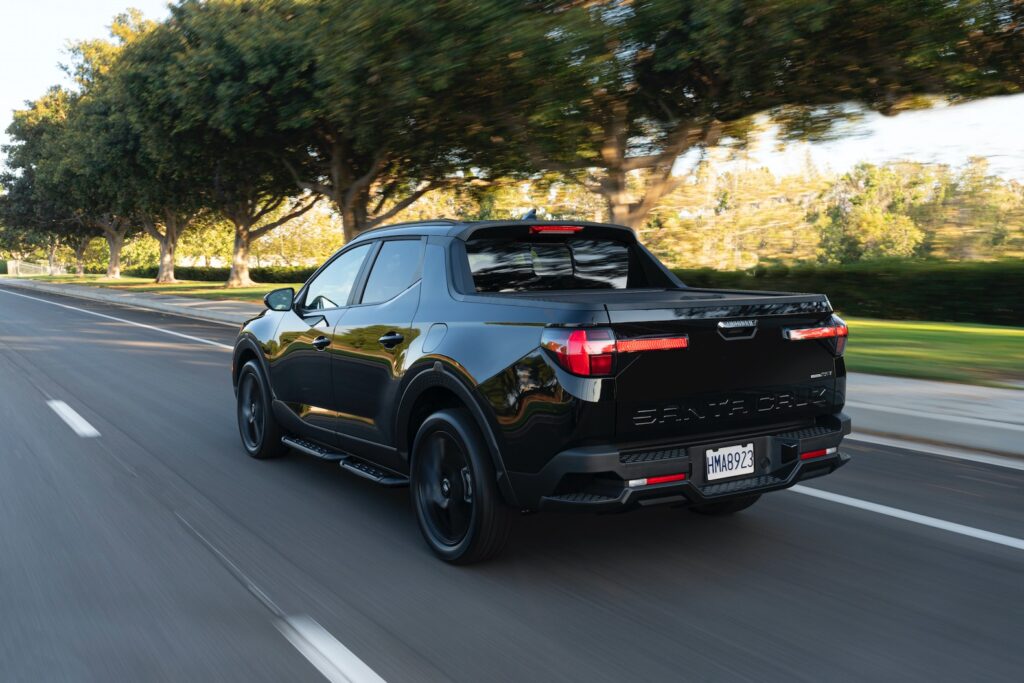
The Santa Cruz is the first truck from Hyundai in the U.S. and rather than being a true body-on-frame truck, the Santa Cruz is based on a unibody platform. The Maverick and Honda Ridgeline are also both based on unibody platforms as well, which provides many benefits for truck buyers that don’t need a rugged, heavy duty truck.
The compact Santa Cruz shares much of its DNA with the Hyundai Tucson SUV. At 195.7-inches long, the Santa Cruz is the smallest truck on the market, since the Maverick measures four inches longer. But the Santa Cruz is a bit wider than the Maverick, which makes it easier to fit three people in the second row.
Compared to the more conventionally styled Maverick, the Santa Cruz has a less traditional truck look with its sculpted body. For some it’s funky styling brings back memories of the Subaru Brat, which most buyers these days don’t even know what that is. The Santa Cruz stands out, but it still looks more car/ SUV-like than a burly truck.
At the rear the Santa Cruz has the shortest bed of any truck at 4.3-feet, which is just a tad shorter than the Maverick’s 4.5-foot bed. The Maverick is also four inches longer than the Santa Cruz. Those dimensions mean that you able to load a bunch of plywood back there, but there is plenty of room for your gear. Just like the Ridgeline there’s a lockable underfloor storage area. The tonneau cover also slides back and forth to secure your cargo as well.
The Santa Cruz isn’t meant to be a true work truck, since it can only haul up to 1,753 pounds, but that’s plenty enough capability to haul a weekend’s worth of camping gear. It can tow up to 5,000 pounds as well.
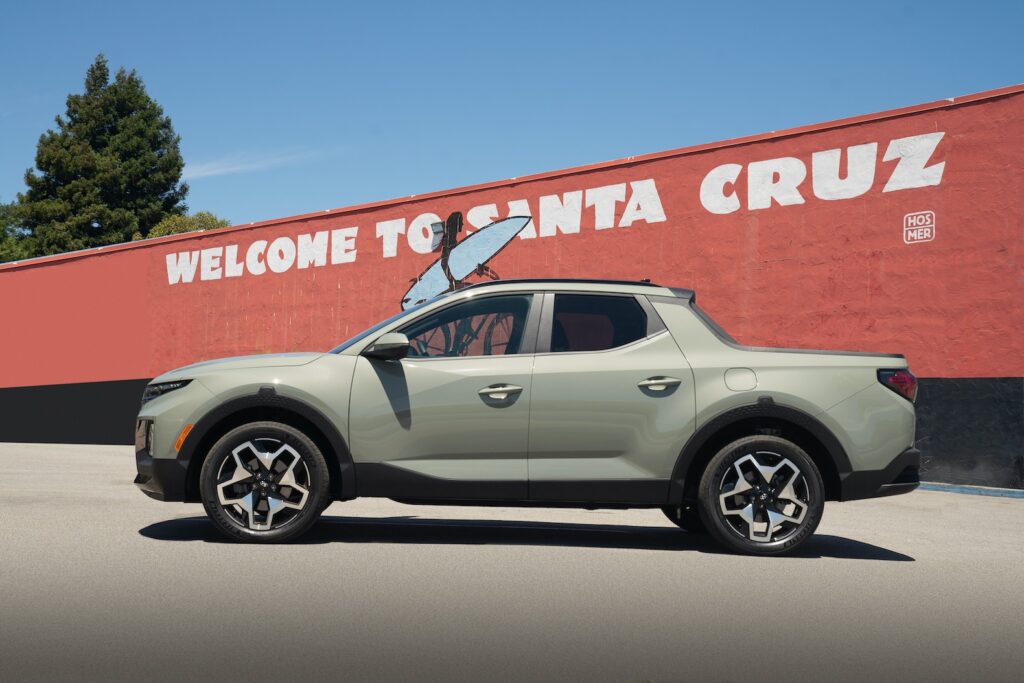
Under the hood, there are two engine options. The base engine is a naturally aspirated 2.5-liter four-cylinder with 191 horsepower and 181 pound-feet of torque. The better choice is the turbocharged 2.5-liter that generates a nice 281 hp and 311 lb-ft. Both engines are mated to an eight-speed transmissions, but the turbo gets a dual-clutch setup. All-wheel drive is optional.
It’s a miss that Hyundai hasn’t introduced a Santa Cruz hybrid yet, since that would be a direct rival to the hybrid version of the Ford Maverick.
Fuel economy specs are merely ok, with the base version with front-wheel drive being rated at 22 mpg city, 26 mpg highway and 23 mpg combined. Adding all-wheel drive drops the city and highway specs by 1 mpg. The turbocharged version is rated at 19 mpg city and 27 mpg highway. See a hybrid version would do wonders here. A Santa Cruz hybrid seems like an easy idea, since the Tucson is offered in hybrid and plug-in hybrid versions.
We tested the turbocharged version, which packs a nice punch for jaunts around town. The turbo is refined and responsive, without any significant turbo lag. Since the Santa Cruz is more car-like than a truck, like the Toyota Tacoma, it also feels more agile with significantly better on-road handling than a body-on-frame truck. It drives more like a compact crossover, which makes it the perfect truck for driving around town.
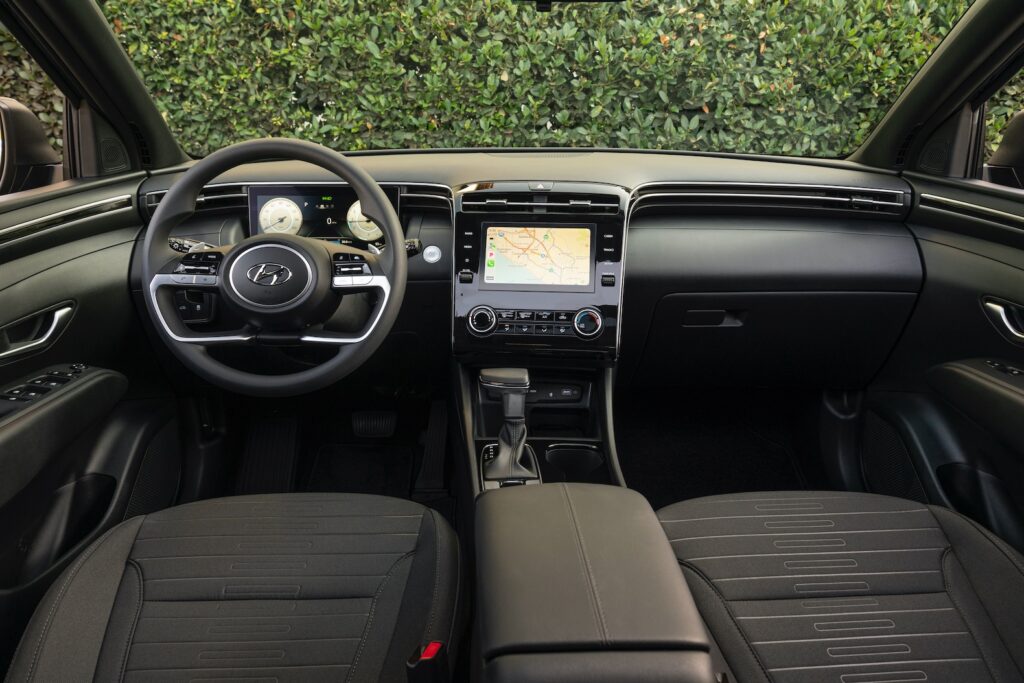
Inside the Santa Cruz feels modern and upscale. It easily tops the Maverick here with its higher quality materials and better tech features. It comes standard with an eight-inch touchscreen, but our tester had the larger 10.3-inch screen. Just like in other Hyundai models, the smaller screen offers wireless Apple CarPlay and Android Auto, but you have to use a wire to connect to the larger screen. In front of the driver there’s also a fully digital gauge cluster.
The infotainment system reacts fast with modern graphics. Our only complaint is the lack of a physical volume knob with the larger screen. The capacitive controls below the screen for the climate control and some of the infotainment settings are a bit frustrating to use at times. Fortunately most automakers are now realizing that driver’s prefer physical knobs and buttons, which has forced them to revert to a more conventional setup.
The styling of the cabin should look familiar to you if you’ve been in the Tucson. It looks much the same with just a few changes. The big difference is the shortage of rear legroom, at only 36.5-inches, which makes it a tight squeeze for taller passengers.
On the safety front, the 2023 Santa Cruz comes standard with the many driver assistance tech features that we’ve come to expect. Like automatic emergency braking, blind-spot monitoring, rear-cross traffic alert, lane departure warning and lane-keeping assist. Adaptive cruise control is optional.
The pricing for the 2023 Hyundai Santa Cruz starts at $27,035, including destination. It’s available in five trim levels: SE, SEL, Night, SEL Premium and Limited. The top of the line Santa Cruz Limited is priced at $41,905.
At the end of the day, the Hyundai Santa Cruz is perfect for anyone that wants the versatility of a truck, but who also wants carlike handling and a comfortable interior. If you don’t go off-roading often or need to haul a bunch of stuff, the Santa Cruz finds the perfect balance between a small pickup and a compact SUV.

